imposter syndrome
description: a psychological pattern where an individual doubts their skills or accomplishments and has a persistent fear of being exposed as a 'fraud'
57 results
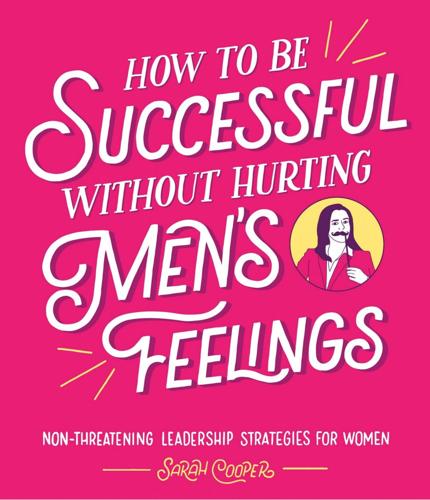
How to Be Successful Without Hurting Men’s Feelings: Non-Threatening Leadership Strategies for Women
by
Sarah Cooper
Published 1 Nov 2018
This way, when you get a promotion, your boss will feel like he’s rewarding your hard work when actually he’s rewarding your lack of ambition. The less ambition you appear to have, the further you’ll go. EXERCISE: IMPOSTER SYNDROME CHECKLIST Playing the game at work can be scary. You might feel like a fraud, like you’re putting on a show, like you’re not good enough. Luckily, feeling like a fraud is all part of the game. It’s called “imposter syndrome” and all the best people have it. Do you have it? And is yours as good as everyone else’s? Use this checklist to see how your imposter syndrome stacks up. anatomy of an EMAIL why i cc’ed you on this EMAIL CHAPTER 4: authenticity How to Bring Your True Self to Work and Then Hide It Completely Authenticity is about bringing your whole self to work, except any part of you that makes you different in any way.
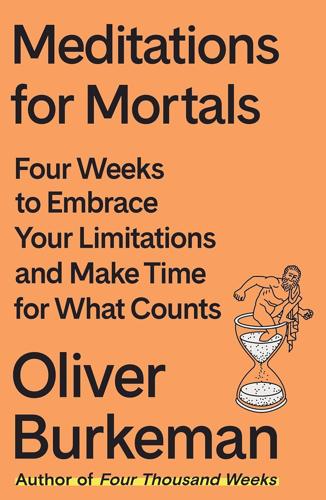
Meditations for Mortals: Four Weeks to Embrace Your Limitations and Make Time for What Counts
by
Oliver Burkeman
Published 8 Oct 2024
‘Most successful people,’ as the entrepreneur and investor Andrew Wilkinson has observed, ‘are just a walking anxiety disorder, harnessed for productivity.’ The most common form of the anxious feeling I’m trying to pinpoint here is sheer, overwhelming busyness, the sense of having far too much to do in the time available for doing it. But it takes other forms as well. For some it manifests as imposter syndrome, the belief that there’s a basic level of expertise that pretty much everyone else has attained, but that you haven’t, and that you won’t be able to stop second-guessing yourself until you get there. It also arises, for many of us, in the feeling of not yet having cracked the code of intimate relationships, so that for all our outward accomplishments we feel thwarted on a daily basis by the bewildering complexities of dating, marriage, or parenting.
…
Your problem might be that you’re a perfectionist, who suffers anguish in your efforts to produce work that meets your exacting standards. But that situation’s worse than you think, too, because the truth is that no work you bring into concrete existence could ever meet the perfect standards in your mind. Imposter syndrome? You might believe you need more experience or qualifications in order to feel confident among your peers; but the truth is that even the most experienced and qualified people feel as though they’re winging it, much of the time – and that if you’re ever going to make your unique contribution to the world, you’ll probably have to do it in a state of feeling unprepared.
…
The moment I first see a friend’s chaotic kitchen is like the moment in a blooper reel when two actors can’t help breaking character and collapsing in laughter. Nominally, it shouldn’t be happening, but it always feels delightfully real when it does. Of course, the benefits of letting facades crumble aren’t confined to dinner parties. Research into imposter syndrome provides another rich vein of examples. You might conclude that one good way to boost the confidence of people who feel like frauds at work would be to connect them with inspirational mentors. But when the sociologists Jessica Collett and Jade Avelis studied imposterism among entry-level academics, they discovered an unwelcome irony: mentoring schemes that paired young women with more experienced ones often made the younger scholars feel more insecure and inadequate, through negative comparison with their uber-accomplished elders.
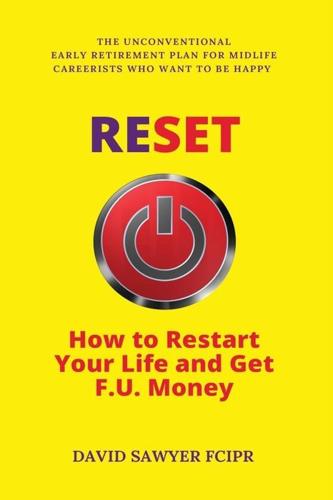
Reset: How to Restart Your Life and Get F.U. Money: The Unconventional Early Retirement Plan for Midlife Careerists Who Want to Be Happy
by
David Sawyer
Published 17 Aug 2018
If I hadn’t taken this approach, I’d not have discovered SEO, rediscovered reading, established a newsletter, or been turned on to the life-changing learnings of the financial independence movement. Riffing is spiffing. #16 Don’t worry about imposter syndrome “Fake it until you make it” is not an approach I recommend. On the flip side, imposter syndrome (“the psychological phenomenon whereby people are unable to internalise their accomplishments[160]”) is one of the biggest threats to creativity and achievement I know. If you’re a midlife careerist, you’ve been on this planet for between 35 and 60 years.
…
You may not have done digital for too long, but it’s only a set of skills, a new approach to life. What you do have is a lifetime of experience, a wise head, some-thing worth sharing with the world. The fact you started blogging yesterday doesn’t mean you don’t have a valid opinion. Maybe it’ll be even more valid than others who’ve been round the digital block a few times. Imposter syndrome stems from comparing yourself to others. I have it every time I write a blog post on a topic that better bloggers have covered, hundreds of times before. But it doesn’t stop me sharing what I think, and it mustn’t stop you. #17 You’ll meet me on your way back down Don’t listen to the haters or feed the trolls.
…
Having identified your hardest thing, do your research, rough out a plan and start working, putting one foot in front of another, modifying said plan as you go along. Set targets, and an end goal. How will you know when you get there? Here are the things that would have helped me overcome my procrastination if I’d known them during the first 40 years of my life: Imposter syndrome[461]. Everyone suffers from it, no matter how brilliant they are. Don’t let the fact that others have got a head start distract you from your goal. Fear is good, and you’ll always have it. It’s not about conquering your fear; it’s about learning to act despite it. Doubt is good, too.
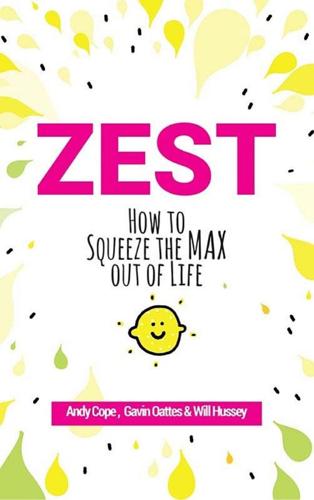
Zest: How to Squeeze the Max Out of Life
by
Andy Cope
,
Gavin Oattes
and
Will Hussey
Published 19 Jul 2019
The trick is to accept there’s going to be downs, but recognize that you don’t have to stay there. It’s okay to snap out of it, and it’s okay to buck-up. It’s okay to deviate. You don’t have to have a period of mourning on a Monday morning. The Fanciful French Vivre sans temps mort. (Live without wasted time.) Parisian political slogan We witness ‘imposter syndrome’ to the power of a hundred. Normal imposter syndrome is the feeling of being found out. We’re talking about the fear of finding out you’re an imposter of who you once were. A doppelganger of yourself. You look in the mirror and it sure looks like you, but deep down you know it’s a pale imitation of the person you could be.
…
You can check Will out at www.artofbrilliance.co.uk or you can tweet him at @aobrillwill Index ABCDE exercise 189, 190–1, 205 Adams, Tony 216 addiction 118 adversity 189, 190 advertisement 111 aggression 88 alive time 215 aliveness 173–4 Allingham, Henry 216 allodoxaphobia 103 altruism 209 Amazon 28 anger 69, 167 angst 70 animation 65, 66 anxiety 30, 63, 83, 86, 87 Ardagh, Philip 75 Ardagh Tips 56 attachment theory 114 attention 111, 112 attitude 153, 165 can-do 72 awareness 195 Balboa, Rocky 177 belief 189, 191 Beschaulich 25 body 54–6 boogie woogie 127 bothered, being 71–2, 169 Bowie, David 44 brain 101–2 evolution of 148 fuel 148 healthy 218–20 brain injury 133 breathing 197–9, 205 Brilliant, Ashleigh 201 BROMO 115, 116 busyness 38–9, 40 Call the Midwife 77 can-do attitudes 72 Calment, Jeanne 216 capitalism 111 carers 132–6 caring profession 136 Carlson, Mary 137 celebration 67–8, 131 change, willingness to 173 children 45, 67–8 Christakis, Nicholas A. 96 clickbait 69 Cliff, Jimmy 26–7 Cognitive Behavioural Therapy 190 commitment 163–9 comparison 104–7 compassion fatigue 135 compound interest 150–1 compulsive gambling 118 confidence 61, 62 conflict 118 connectedness 108 consequence 189, 191 consumption 42 content of experience 195 contentment 42 counselling 177 Crawford, Matthew 111 creativity 158 daily challenges 58–9 Dali, Salvador 220 dead time 215 Dean, James 128 depression 30, 62, 83, 88 as self-reinforcing cycle 132 depressive episode 88 Deresiewicz, William 106, 122 despair 167 destination addiction 92 Diagnostic and Statistical Manual of Mental Disorders 5th Edn (DSM5) 63 digital detox 117–21 Dillard, Annie 107 disconnectedness 108 dispute, learning to 189, 191–2 Dryden, Dr Windy 105 education level 84 effort 163, 167 ego 194–7 emotional contagion 94–7 emotional soup 96 emotional spillage 96 emotional tolerance levels, normal 88 empathy 147 employee weaknesses 162 emptiness 40, 42, 88 energization 190, 192 enthusiasm 72 envy 104–7, 121 ethnicity 84 eudaimonia 166, 167, 209 euthymia 168 exercise 155 Exorcist, The 195 explanatory style 187–8 Facebook 39, 108–9 FaceTube 39, 128 failure 175 fake news 69 family extended 217 well-being, emotion and 96–7 Feynman, Richard 55 Field, Tiffany 137 flow 9 FOJI (Fear of Joining In)116 FOMO (Fear of Missing Out) 114, 115, 116 food 83, 211 forgetfulness 71 forgiveness 185–7, 204 Fosbury, Dick 81 Fowler, James H. 96 Freud, Sigmund 193 fun 193, 205 gender 84 Gibran, Khalil 20, 121 Gilbert, Dan 101–2 goals 168 Gogglebox 39 Goggling 37–42 Goleman, Daniel 95, 96 good news 68–71 Googling 37–42 gratitude 66 Griffiths, Mark 114 grudges 186 grumbling 61, 185, 186 grumpiness 86 habit 150–2 happiness 62, 72 50/10/40 ratio 83–5 for no reason 209 hacks 210–11 as in-sperience 90–1 instant 166, 167 moment 131–2, 202 sacrificing 166 search for 42, 92–3 as self-reinforcing cycle 132 spectrum 150 thermostat 94 Happiness Pie 83–5 hara hachi bu 217 hard knocks 28–31 Harlow, Harry 137 hate 56–8 haters 56–8 healing 80 health 84 hedonic treadmill 166 hedonism 166, 209 Hicks, Bill 173 Hodgson, Roger 215–16 hope 72, 152–4 House, Oriah, Mountain Dreamer (Invitation, The) 13–16 hugs 137–8 humour, lack of 34 identity 194 of ego 195, 197 illusory self 194 imagination 149 immersion mode 9 imperfections 184 imposter syndrome 36 improvised comedy 129 income 84 individuality 224 inflammation 70 initials, using middle 26 inner strength 75 in-sperience 86–91 Instagram 112, 114, 115, 116, 139 internet addiction 118 irritability 88 Jake, Adventure Time 210 Jamie and the Magic Torch 169 Japan, longevity in 216–17 JOMO (Joy of Missing Out) 116, 117 kalsarikänni see pantsdrunk Katie, Byron 130 Kerouac, Jack: On the Road 53 keystone habits 150, 152, 169 Kim Ki Joon, Dr 114 kindness 57–8 random acts of 57 King, Martin Luther 178, 179 Kington, Miles 218 Kintsugi 183–5, 204 Knopfler, Mark 89 Knudstorp, Jorgen Vig 158 Kool 53 Krishnamurti, Jiddu 196 Lamott, Anne 221 Larson, Gary 104 learned helplessness 154 learning 56 life expectancy 32–3, 216 life satisfaction 167 lifestyle 84 Lightman, Alan 117–18 Logical Song, The 215 London, Jack 223 loneliness 30, 88, 156 longevity league table 216–17 Lucretius 105 mania 88 Manson, Mark 187 marital status 84 Marsh, Nigel 41 materialism 41–2, 105, 197 Mbuki-mvuki 127 mediocrity 88, 165 memories 202 mental illness 62–3 statistics 80 metanoia 80, 81, 82 mindfulness 201, 202 mirror neurons 95 misery 86 modernity 29 MOMO (Mystery of Missing Out) 115 money 42 mood 154 changes 118 morosity 34 motivations 168 Nagasaki, Kendo 194 names 26 meaning of 179–81 Neanderthals 147, 148 negative emotions 70 negativity 61, 62, 69, 72, 165 neocortex 147, 149 neuroplasticity 149 news fake 69 good 68–71 unbiased 70 nexting 102 niceness 57 Nietzsche, Friedrich 138 nightmares 61 NLP 47, 56 nomophobia 113, 114 Normal, being 34–5 normality 177, 204 now, living in the 68, 199–203 Obama, Michelle 57 obesity 155, 156 Oedipus Complex 193 Ogling 37–42 Opening Night Principle 130 openness 95 optimism 72, 83, 152–4, 190 realistic 26 optimistic explanatory style 188, 190 overimagining 149 overthinking 149 Paddington Bear 46 pain 167 panic attacks 30, 63, 87 Palahniuk, Chuck 55 panicking about the future 149 pantsdrunk 139–41 paramedics 136 para-sympathetic arousal 95 passion, finding 158–60 peer review 79 performance review 162 personal development 158 personal responsibility 61 personality 224 pessimism 33 pessimistic explanatory style 188 phobias 103–4 phone separation anxiety 113 physical appearance 84 physical labour 28–9, 30 play 45–7, 225 playground 45 playtime 46–7 Poe, Edgar Allan 155 Poole, Mary 223 positive emotion 70 positive psychology 82, 88, 91, 150, 175 positivity 62, 72, 97 training in 165 post-traumatic growth 178 potential 163 Powell, Richard 184 pratfall effect 138 Pretoogjes 224 procrastination 211 psychological rebuilding 80 random acts of kindness 57 rationalization 147 realistic optimism 154 re-animation 65 regret 225 relapse 118 relationships, investment in 155–7 relaxation 140 remembering 71 retirement 222 Richards, Keith 215 Rogan, Joe 139 roles, social 29 Rose, Axl 174 rumination 149 Schwartz, Kenneth 136 sea squirts 37–8 seeing clearly 26–7 self-awareness 55 self-envy 106 self-harm 30 self-reinforcing cycle 132 Seligman, Professor Marty 189 separation anxiety 113, 114 set point 94 sex drive 88 sharing etiquette 120 sidekick 178–83, 204 silence 112 Simon, Paul 63 skeletons of the past 203–4, 205 skills 165 sleep 160–1 sleep hygiene 160 SLOMO (Slow to Miss Out) 116 small habits 150 smartphone 113–14 detoxing 119 smile 132, 176 Smith, Col.
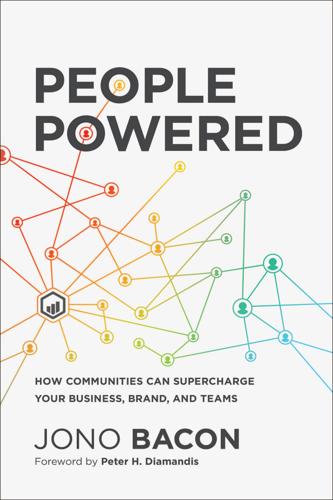
People Powered: How Communities Can Supercharge Your Business, Brand, and Teams
by
Jono Bacon
Published 12 Nov 2019
Has experience solving other people’s problems •Good communicator and able to provide guidance easily in written form EXPERIENCE •Familiar with online and community support •Product experience will be variable, but fairly experienced in using it to solve practical problems (not a newbie) •Some limited experience in online communities MOTIVATIONS •Product discounts •Exclusive access to early features or unique material, content, or experiences •Helping people •Recognition in the community •Broader awareness of her business FEARS •Providing inaccurate information •Providing answers that may cause problems or break something •Imposter syndrome (fear that you may not be as talented as other people think you are) REWARDS •Swag •Financial (e.g., gift cards) •Recognition and validation of her contributions Example 2: Event Organizer Persona This is Miguel and he enjoys coordinating events, conferences, and meetups for the Acme Platform community.
…
They have a long road to travel, but that first success has given them the energy to keep going. If you remember the SCARF model back in chapter 4, we humans are not exactly fans of uncertainty. Many casual members feel socially awkward, don’t feel comfortable speaking up, and often suffer from imposter syndrome (where you feel you are inferior and you will get “found out” by your peers). The major goal with casual contributors is to help them acclimatize and settle in. Help them solve their problems. Build their confidence. Provide them with mentoring and guidance. Help them discover simple-to-follow ways of participating and getting involved.
…
Index Abayomi, 1–3, 7, 9, 19, 35, 278 abuse of system, 158, 217, 233, 234 access, 7–8, 16–17, 54–55, 225, 226 accountability, 139, 146, 148, 149 actions, tracking, 158–59 active participation, 109 adaptability, 176–77, 268–69 Adobe, 244 advertising, 195–96 advocacy, 23–24, 49, 111 Airbnb, 57 ambiguity, 155–56 American Physical Society, 139 Amnesty International, 18 Anderson, Chris, 46, 47 Android platform, 65 Ansari XPRIZE, xviii Apache, 6, 26 Apple, 6, 58, 128 approachability, 69–70 Ardour, 44, 52, 66 Areas of Expertise, 172–75 Ariely, Dan, 17 assets, building, 68–69 assumptions, 137, 271 asynchronous access, 54 attendance, 157 attendees, summit, 247–49 audience personas, 100, 108–19 in Bacon Method, 33 choosing, 109–12 content for, 194–95 creating, 114–16 examples of, 116–19 on Incentives Map, 230–32 On-Ramp Model for, 131, 135–38 Participation Framework for, 130 prioritizing, 112–13 productive participation by, 162–67 and relatedness, 107 audience(s) access to, 7–8 assumptions about, 137 and community strategy, 13 irrational decision making by, 101–8 for local communities, 5 surprising, 73–74 understanding your, 33, 99–100 authenticity, 75, 111, 183, 224 authority, 55–56, 200–201 Author persona, 166–67 automated measuring of condition, 217–18 autonomy, 105–6, 123 awareness, 22–24, 59–61, 192 Axe Change service, 14 Axe-Fx processors, 49–50 backlog, 150–51 Bacon Method, 32–34 Bahns, Angela, 47 Bassett, Angela, 237 Battlefield, 24, 128, 228 behavioral economics, 102–4 Bell, Alexander Graham, 153 belonging, sense of, 15, 18, 20, 143, 187, 215 Bennington, Chester, 183, 184 Big Rocks, 33, 88–96 and cadence-based cycles, 168–70 in community strategy, 94–95 and critical dimensions, 157, 161 defined, 88–89 departmental alignment on, 263 examples of, 91–94 format and key components of, 89–91 and Quarterly Delivery Plan, 34, 145–46, 148, 149 realistic thinking about, 95–96 Black Lives Matter, 18 blocked (status), 147 blogs, 193, 275 Bosch, 13 brand awareness, 24, 59–60 brand recognition, 85 Branson, Richard, 190 Buffer, 214 Build Skills stage, 132, 136, 137 business cards, 241–42 buy-in, 67, 85 cadence, operating on, 34, 264–66 Cadence-Based Community Cycle, 167–70, 264 Canonical, 1, 121, 151, 167, 245 capabilities, persona, 114, 116–18 Capital One, 13 career experience, 83 CasinoCoin, 244 Casual members, 129, 140–42 advancing, 196–97 engagement with, 198–99 incentivizing, 219, 221, 226–27 maturity model for, 166 mentoring, 203 CEOs, reporting to, 260 certainty, 105 Champions model, 49–52, 63–64, 66–67, 113, 260 chat channel, 250 check-ins, 267 civility, 187 clarity, 69–72, 138–39, 234 closing party, 250 coaching, 82–83, 205–6 Coca-Cola, 57 Coffee Bean Rewards app, 145 Colbert, Stephen, 73–74 collaboration, 8–9, 74–75, 185–86 Collaborators model, 52–56, 64–67, 86, 260, see also Inner Collaborator community; Outer Collaborator community commitment, 122 communication, 121 Community Associate, 255 Community Belonging Path, 16–20 community building, 14 additional resources on, 274–76 Bacon Method of, 32–34 as chronological journey, 127–28 consultations on, 276–77 continuing to learn about, 272–74 defining your value for, 77–78 end-to-end experience in, 125–26 fundamentals of, 15–16 getting started with, 37–38, 62 key principles of, 67–74 monitoring activities related to, 206–8 risks associated with, 154–55 tools for, 8 see also successful community building community–community engagement, 157 community culture, 30–31, 70–72, 179–88 Community Director, 254–58, 260 Community Engagement Model(s), 49–67 in Bacon Method, 33–34 Champions model, 49–52 Collaborators model, 52–59 and Community Value Statement, 80 Consumers model, 45–48 importance of selecting, 43–45 and marketing/public awareness, 59–61 scenarios for selecting, 61–67 Community Evangelist, 255 community(-ies) defined, 13–15 digital, 2–3, 5–13, 237 experimenting in, 123 foundational trends in, 7–9 future of, 35, 277–79 local, 3–5 power of, 7 social dynamics of, 15–16 value generated by, 20–29 Community Launch Timeline Template, 191 Community Leadership Summit, 179, 239 community management staff, 254–61 Community Managers, 78, 125, 126, 195, 255–56, 260–61 Community Mission, 40–43, 169 Community Mission Statement, 42, 80, 113 Community On-Ramp Model, 33–34, 130–38 community overview cards, 241–42 Community Participation Framework, 128–45 building community based on, 151–52 and building engagement, 138–44 Community On-Ramp Model in, 130–38 described, 128–30 engagement strategy to move members along, 196–206 focusing on creativity and momentum in, 209 incentives and rewards in, 145 incentives on, 211–13 incentivizing transitions in, 218–22, 226–27 mentoring in, 202–6 Community Personal Scaling Curve, 184 Community Persona Maturity Model, 163–67 Community Promise, 70–71 Community Specialist, 255 community strategy, 30 Big Rocks in, 94–95 changing, 96, 208 control over and collaboration on, 74–75 Core members’ contributions to, 201 execution of, 253–54 importance of, 13 integration of, in organization, 261–68 learning from implementation of, 268–69 planning, 39 Regular members in, 143 risks with, 29–32 and SCARF model, 105–8 variability in, 30 community summits, 245–51 finalizing attendees and content for, 247–49 follow through after, 250–51 running, 249–50 structure for, 246–47 community value, 164–67 Community Value Proposition, 175 Community Value Statement, 80–88 and Big Rocks, 89, 95 in cadence-based cycle, 169 maintaining focus on, 97 and on-ramp design, 135–36 prioritizing audience personas based on, 113 updating, 83–84, 87–88 value for community members in, 80–84 value for organization in, 84–88 company–community engagement, 157 competitions, 194 complete (status), 147 CompuServe, 5 conditions, for incentives, 216–18, 230–32 Conference Checklist, 241 conferences, 194, 195, 239, 240–43 connection(s) desire for, 9 for Regular members, 200 constructive criticism, 122–23 consultations, on community building, 276–77 Consumers model, 45–48, 62–63, 260 content for community summits, 247–49 in Growth Strategy, 192–95 for launch, 189 as source of value, 82 Content Creators (persona), 110–11, 113–15 content development in Champion communities, 49–50 in Collaborator communities, 52–56 by communities, 26–27 as source of value, 82, 86–87 contests, 194 contributions, to communities, 17, 19 control over community strategy, 74–75 over Regular members, 143 co-organizing events, 239 Core members, 129, 140 advancement for, 196–97 characteristics of, 143–44 at community summits, 242 engagement with, 201–2 incentivizing, 215, 219–20, 222, 227 maturity model for, 165, 166–67 mentoring for, 203, 205 percentage of, 141 creativity, 209 critical dimensions, 156–58, 161 criticism, 122–23, 176 cross-functional communities, 88 crowdfunding, 23–24 Cruz, Ted, 73–74 culture, community, see community culture Culture Cores, 181–88 customer engagement, 20–22 customer growth, as source of value, 85 Customer Relationship Management (CRM) system, 21 Cycle Planning, 168 Cycle Reviews, 268 dashboards, 160–61 data analysis, 207, 208 Davis, Miles, 182 Debian, 6, 26 decision making irrationality of, 101–8 pragmatism about, 184 SCARF model of behavior, 104–8 System 1 and 2 thinking, 102–3 unpopular decisions, 186 decision paralysis, 38, 106 dedicated events, organizing, 239–40 delayed (status), 147 delivery commitment to, 263–64 successful, 162, 167–70 delivery, as critical dimension, 157 delivery plans, see Quarterly Delivery Plan demonstrations, 194, 244 departmental alignment, 263–64 developer community, Big Rocks for, 93–94 Developer Relations personnel, 255 Developers (persona), 111, 114, 115 Diamandis, Peter, 40 Dickinson, Emily, 211 difficulty, of condition, 217 diffusion chain, 54 Digg, 12–13 digital communities early, 5–7 evolution of, 9–13 foundational trends in, 7–9 in-person events for, 237 as local and global communities, 2–3 digital interaction, and in-person events, 251 digital training, 243–44 dignity, 17 discipline, for community building, 31 Discourse, 66, 228, 233, 267 discovery, in gamification, 233 discussion forums, 49 Disney, 128 Docker, 12, 56 documentation, 274 domain expertise, 256, 257 Dreamforce conference, 22 Drupal, 204 Early Adopter program, 189–90 Editorial Calendar, 192–95 education (about product or service) in communities, 24–25 as source of value, 82 efficiency, as critical dimension, 157 ego calibration, 234–35 empathy, 186–87 employees openness for, 182–83 training and mentoring for, 266–68 empowerment, 55–56, 222 end-to-end experience, 59, 125–26 engagement as Area of Expertise, 174 Big Rocks related to, 93–94 with community, 72 in Community On-Ramp Model, 133–34, 136, 137 and Community Participation Framework, 138–44 in Community Participation Framework, 129 at conferences, 242 critical dimensions related to, 157 customer and user, 20–22 and Growth Strategy, 192 positivity and, 185 quality of, 159 rules for engaging with community members, 119–22 and submarine incentives, 226 and understanding audience, 99–100 Engagement Strategy, 181, 196–206 engineering department, community leadership staff reporting to, 260 equal opportunity, in Collaborator communities, 55, 58–59 estimated units, on Incentives Map, 231, 232 Event Evolution Path, 238–40 Event Organizers (persona), 111, 114–15, 117–18 events in-person, see in-person events online, 193 Everett, Noah, 224 execution of community strategy, 253–54, 268 successful, 162, 167–70 expectations clear, 70–72 in gamification, 234 in great experience, 127 related to Big Rocks, 95–96 experience, of audience persona, 114, 116, 118 experimentation, 123, 171 to build organizational capabilities, 206–8 with events, 251 expertise of community leadership staff, 256, 257 of community members, 28 in digital communities, 8 as source of value, 83 Exploding Kittens game, 24 extrinsic rewards, 214, 215, 216 on Incentives Map, 231 submarine incentives for, 224–25 Facebook, 13, 24 failure, as opportunity for improvement, 151 fairness in SCARF model, 107–8 of submarine incentives, 225 Fans as audience persona, 110, 113 community model for, 44, 62–63 fears, of audience persona, 114–15, 117, 118 Fedora, 66, 264 feedback about audience personas, 116 on Big Rocks, 94–95 from communities, 72–73 and community culture, 186 from Core members, 202 on mission statement, 41 on Organizational Capabilities Maturity Model, 176 in peer-based review, 204 from Regular members, 143, 200 Figment community, 10 Final Fantasy, 128 financial commitment, and creating value, 96 Firefox, 23, 209 Fitbit, 139, 145 focus for community building, 31 on Community Value Statement, 97 follow through after community summits, 250–51 after conferences, 242–43 formal experience, 114 forums, 91–92, 158 founders, community leadership staff reporting to, 260 Four Rules for Measuring Effectively, 156–61 Fractal Audio Systems, 14–15, 49–50 freeloaders, 54 fun, in community experience, 84 gamification, 232–35 Garmin, 190 GitHub, 24 global communities, digital communities as local and, 2–3 Global Learning XPRIZE Community, 189 GNOME, 26 GNU community, 6 goals for community summit sessions, 249 of Core members, serving, 202 for employee participation with community, 267 in incentives, 214 on Incentives Map, 230–32 for new hires, 259 Google, 13, 57, 58, 65, 128 Gordon-Levitt, Dan, 11–12 Gordon-Levitt, Joseph, 11–12, 219 governance, in Inner Collaborator communities, 66 gratification, 120, 127 group dynamics, 100, 119–22 group experiences, referral halo for, 61 grow, willingness to, 257 Growth (Area of Expertise), 174 growth, as critical dimension, 157 Growth Strategy, 181, 188–96 growth plan, 192–96 launch plan, 189–91 guest speakers, 238–39 habits, building, 142, 267 HackerOne, 69–70, 194, 214 Harley Owners Group, 132 help asking community members for, 120, 144 as source of value, 82 high-level objectives, see Big Rocks hiring, 27–29, 256 hiring away approach, 258–59 HITRECORD, 11–12, 219 Hoffman, Reid, 152 HomeRecording.com community, 81 humility, 187, 257 hypothesis testing, 207–8, 271–72 IBM, 6 idealism, 153–54 IGN (Imagine Games Network), 47–48 Ikea Effect, 101–2 impact in Community Belonging Path, 18 and Engagement Strategy, 199 multiplying, with communities, 2, 3, 9 imperfections, 188 imposter syndrome, 142 inauthentic participation, 233 incentives, xvii–xviii, 197 in Community Participation Framework, 145 on Community Participation Framework, 211–13 components of, 213–18 in Growth Strategy, 196 maintaining personal touch with, 235 in Outer Collaborator communities, 65 power of offering, 213–18 stated vs. submarine, 218–27 Incentives Map, 34, 229–32 Incentive Transition Points, 218–19 stated incentives for, 221–22 submarine incentives for, 226–27 incentivization building engagement with, 140 in Community Participation Framework, 130 Incubation stage, 171, 172 independent authenticity, 111 Indiegogo, 23 individual value, 164–67 influence, psychological importance of, 71 Influencing phase (Product Success Model), 52 information in community, 121 in digital communities, 8 infrastructure, for launch, 189 Inner Collaborator community, 56–58, 65–67, 86, 229 Inner Developers (persona), 111 in-person events community summits, 245–51 conferences, 240–43 and digital training vs. training workshops, 243–45 Event Evolution Path and strategy for, 238–40 fusion of digital interactions and, 251 in Growth Strategy, 195 launch, 190–91 in local communities, 4–5 managing, 237–38 value of, 77–78 in progress (status), 147 insight, from communities, 28, 72–73 intangible value, 78–79, 83 Integration stage, 171–72 Intel, 57 intentionality, 39, 69–70, 187 Intention stage, 171, 172 internal communities, 13 Community Engagement Model for, 66–67 importance of culture for, 180 personal interaction in, 185 value of, for community members, 83 Internet, 5–7, see also digital communities Internet Explorer, 23 intrinsic rewards, 215, 224–25 involved teams, on Quarterly Delivery Plan, 147, 148 Iron Maiden, 39 Jeep, 139 Jenkins, 26 job candidates, community members as, 27–29 job descriptions, community leadership staff, 258 Jokosher, 199 jQuery, 204 Kahneman, Daniel, 102 karma (Reddit), 228 Key Initiatives, for Big Rocks, 90, 91–93 keynote addresses, 245–47 Key Performance Indicators (KPIs), 90–94 cadence-based cycles for delivery of work on, 169, 170 on Quarterly Delivery Plan, 146, 148–50 tracking progress on, 159–60, 160–61 Kickstarter, 12, 23 Kubernetes, 26, 53, 66, 134, 204 labor, community members as source of, 120 The Late Show with Stephen Colbert (television series), 73–74 launch event, 190–91 launch plan, 189–91 leaders, community, 3, 4 leadership as Area of Expertise, 174 and autonomy in organizations, 123 clear and objective, 69–70 in community culture, 186 community involvement by, 262 by Core members, 144 in Inner Collaborator communities, 66 leadership value, 165, 167 lead generation, 28–29 A League of Their Own (film), 39 learning about community building, 272–74 from community strategy implementation, 268–69 Learning phase (Product Success Model), 51 Lego, 9, 10 Lego Ideas, 10 Lenovo, 57 Leonardo da Vinci, 37 Lindbergh, Charles, xvii Linkin Park, 183 Linux, 6, 26, 273–74 Linux Foundation, 26, 74 live stream, 250 local communities decline of, 3–5 digital communities as global and, 2–3 The Long Tail (Anderson), 46 Ma, Jack, 77 Ma Jian, 125 Make:, 195 Management (Area of Expertise), 173–74 marketing, 22–24 audience personas in, 108–9 and Community Engagement Model, 59–61 as source of value, 85 marketing department, community leadership staff reporting to, 260 Mastering phase (Product Success Model), 51–52 Mattermost, 214 maturity models, 34 Community Persona Maturity Model, 163–67 Organizational Capabilities Maturity Model, 171–76 meaningful work, 9, 17–18, 27, 41 measurable condition, 217 measurable goals, 160 measurable value, in Community Persona Maturity Model, 164–65 measuring effectively, rules for, 156–61 meeting people, as source of value, 82 meetings after conferences, 242–43 with conference attendees, 241 in local communities, 4–5 Meetup.com, 133 meetups, organizing, 239 mentoring for Casual members, 142 for community-building employees, 267–68 for community leadership staff, 256 by community members, 29 in Community Participation Framework, 202–6 of new hires, 259 as source of value, 82–83 meritocracy, 55 message boards, 5–6 Metal Gear Solid, 128 Metrics (Area of Expertise), 175 Mickos, Mårten, 69–70, 74, 262 Microsoft, 6, 13, 23 Minecraft, 25 Minecraft Forum, 25 Minecraft Wiki, 25 Minimum Viable Product, 68–69 mission statements, 32, 42, 80, 113 momentum, in Engagement Strategy, 198 momentum effect, 209 in Growth Strategy, 188, 195 in marketing and brand/product awareness, 60–61 motivations for audience persona, 114, 117, 118 for community members, 119–20 Mozilla, 23 MySpace, 12–13 NAMM music show, 239 need, for community, 30 networking, 28–29, 242 New York Times, 23 Nextcloud, 134 niche interests, 45–47 Nintendo, 9, 228 norms, cultural, 70, 130, 180, 182 notification, 147, 148 not started (status), 147 objectives, see also Big Rocks objectivity, of leadership, 69–70 onboarding, 107 in Community Participation Framework, 129 Community Persona Maturity Model for members in, 164, 165–66 gamification for, 233 importance of, 130–31 in Outer Collaborator communities, 65 online events, 193 On-Ramp members, incentivizing, 218–19, 221, 226–27 openness, 182–84 open-source code, 26, 53 open-source communities, 57–58, 261 Open Source community, 10 OpenStack, 26 optimization, in Engagement Strategy, 199–200 Optimizing phase (Product Success Model), 51 organizational capabilities building, with communities, 27–29 cadence-based cycles for building, 265–66 executing strategy to build, 253–54 experimentation to build, 206–8 success in terms of building, 162, 171–76 organizational experience, of community members, 122 organizational values, and community culture, 182–88 organizations community members as labor for, 120 identifying value for, 84–88 integration of community strategy in, 261–68 internal communities at, 13 leadership and autonomy in, 123 Orteig Prize, xvii Outer Collaborator community, 56–59, 64–65, 86 Outer Developers (persona), 111–12, 136–37 Owner of Big Rocks, 90, 91 in cadence-based cycles, 168–69 on Incentives Map, 231, 232 on Quarterly Delivery Plan, 147, 148 Participant Rewards Peak, 215–16 participation active, 109 audience personas and types of, 109 by Casual members, 142 in Consumer communities, 48 inauthentic, 233 productive, 162–67 PayPal, 13, 57 Pebble Smartwatch, 23 peer-based review, 203–5 peer-review process, 55 peer support, 139–40 peer value, 164–67 Peloton, 133, 233 Penney, James Cash, 253 people person, 256–57 perfection, 268–69 performance review, community engagement in, 262 permanence, of communities, 14 personal interaction, 184–85, 199 personal touch with incentives, 235 and submarine awards, 222–26 personal validation, 120, 224–25 personas, audience, see audience personas Photoshop “Magic Minute” videos, 244 PlayStation, 233 podcasts, 194 Pop!

Brotopia: Breaking Up the Boys' Club of Silicon Valley
by
Emily Chang
Published 6 Feb 2018
Additional compelling research suggests that high-achieving women suffer from “imposter syndrome,” a term coined in 1978 by two psychologists, Pauline Rose Clance and Suzanne Imes, to summarize how women often feel undeserving of their success. Despite their concrete achievements, these researchers said, women often believe they are not that smart and will eventually be exposed as frauds. Other researchers have found that women won’t apply for jobs unless they meet 100 percent of the qualifications, while men will apply as long as they have 60 percent of the boxes checked. Imposter syndrome has been found in all kinds of industries as well as in professions such as law and medicine, where the metrics for success and achievement are widely understood and agreed upon.
…
Jack Dorsey, who returned to Twitter as CEO when Costolo left, is also taking an innovative approach to improving the environment for women at his other company, Square. New female engineers joining the company are placed on teams that include other women rather than alone with a group of men. The hope is to engender camaraderie and networking and mitigate the “imposter syndrome” that women often experience when they are the only female in a room of male engineers. Still, with a limited number of female engineers, there is a trade-off to this strategy: some teams will remain all male. It’s an experiment, one that Dorsey believes is worth trying. In the meantime, Square has developed a strong bench of female executives.

March of the Lemmings: Brexit in Print and Performance 2016–2019
by
Stewart Lee
Published 2 Sep 2019
Stewart Lee, writer/clown Stoke Newington, March 2019 PART I: BREXIT IN PRINT 2016–2019 Introduction I always maintain that I take on a persona when writing columns for the Observer: that of an adopted man, from a relatively normal social background, who is an obvious victim of imposter syndrome. I don’t so much write the columns as transcribe them. The adopted man stands at my shoulder, just out of sight, biting his nails and chewing the inside of his face, mumbling things into my ear, some of which I mishear. He simply can’t believe he is being employed by a posh left-leaning newspaper that his own parents wouldn’t have read, and knows there has been some mistake.1 Thus, he tries to compensate by employing over-finessed language and attempting to give a good account of himself, politically and intellectually, aware that he is being scrutinised by his betters.
…
Nonetheless, it’s odd to be called out as evidence of ‘the rancid tip of a cesspit that is the modern male attitude to women’ in a magazine whose website has a ‘Hottest Woman of the Week’ feature. It’s such an odd phrase, ‘the rancid tip of a cesspit’, that I had to go online and google pictures of cesspits to make sure I had understood what one was. In my newspaper columns, I deliberately try to mangle my metaphors, writing in character as a man with imposter syndrome who is out of his depth in a posh newspaper and is trying to overcompensate with complex language that is beyond him. But Parson’s incoherence, as brilliantly parodied each month in Viz, is effortless. A cesspit is, literally, a pit full of cess. It can’t have a tip as it is not a conical solid.
…
We have hung on here, where we are at home, because getting two series of Comedy Vehicle commissioned back to back meant we were financially able to, but maybe the place escapes me now, and most of the people I knew have been priced out. Perhaps the increasing self-loathing of the Stewart Lee character reflects his being marooned on this odd social archipelago, imposter syndrome eating away again. Maybe it’s time to go and live in a wood and write stand-up about squirrels and wild boar. The world that shaped me has shifted. Perhaps I am the archaic relic Brendan McCarthy, the Mad Max writer, says I am. 38 This tweet is a verbatim quote, except it was ‘Stoke Newington’ and not ‘Islington’.
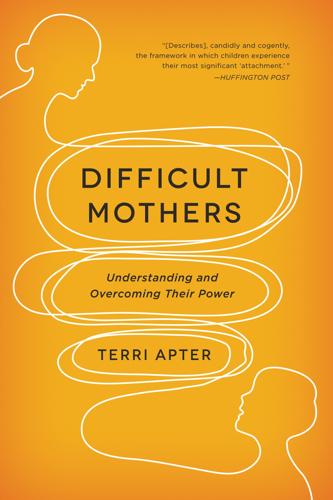
Difficult Mothers: Understanding and Overcoming Their Power
by
Terri Apter
Published 6 May 2012
Index abandonment, 9, 11, 52–53, 115, 122, 125 unconditional love vs., 48–49 abuse, 18–19, 78–79 ;see also violence acceptance, 21, 199–200, 201 of blame, 44–45, 60–61, 66, 69, 102 accusation, via mindreading, 51 “acting out,” 193, 196 acts vs. patterns, 3–4, 45–46, 64 addiction, 18, 51, 106, 107, 137–38, 144, 172, 201 adolescence see teenagers affective sharing, 55, 143 see also conversations, with infants affect regulation, 210n see also emotional development; emotional intelligence age, of children, view of mother affected by, xv, 1–2 Aikido approach, 171 Ainsworth, Mary, 215n alcoholism, 18, 51, 137, 172 alloparenting, 136 ambivalence, maternal, 127, 141–42, 165–66 ambivalent attachment, 174, 215n American Psychiatric Association, 212n amour propre, 95 amygdala, 53–54, 64–65, 201, 209n anger, 203 of children at mothers, 105, 144, 201 depression vs., 139 escalation of, 56 misplaced, 15, 50 of narcissistic mothers, 96 in normal families, 14–15, 45–46, 64, 161, 165, 166 regulation of, 35 relinquishing, 204 unconscious, 165 angry mothers, xiii, 5–6, 14–16, 29–30, 43–73 adult children of, 5–6, 29–30, 52, 62–73 auditing effects of, 65–72 barriers to challenging, 45–51 blaming of child by, 47, 50, 169, 181–82 coping mechanisms of children of, 15–16, 56–61 developmental harm caused by, 15–16, 29–30, 53–61 dilemma imposed by, 46–49 fear of, 30, 48, 52–61 internalization of voice of, 59, 61, 67, 71–72 non-child targets of, 44 perspective of, 43–44, 46–47 physical experiences of, 56–58 tactics of, 49–51 unpredictability of, 6, 15, 29, 62, 72, 174 violence of, 6, 15, 43, 52, 58, 66 Anna Karenina (Tolstoy), 9–10 anxiety, 4, 9, 15, 64, 176, 203 as deflection, 170 depression vs., 139 regulation of, 35 repetition compulsion and, 58–59 separation, 134–36 triggered by others’ success, 111–12 see also fear anxious attachments, 174 Anywhere But Here (Simpson), 101–2 apathy, defensive, 134–35 appeasing, 11, 13 of angry mothers, 59–60, 67–69 of narcissistic mothers, 97–105, 108–10 approval, 115, 119, 120–21, 123, 130 Apter, Terri: methodology of, xiv–xv, 94 as mother, 45, 76 mother of, 7, 43–45, 75–76 Psychology Today article by, viii, 227 Asperger’s syndrome, 144 attachment: lost capacity for, 135 patterns of, 174–75, 215n attention, demands for, 146 attunement, 35–37 see also mirroring auditing see emotional audits autism, 213n autobiographical self, 82–84, 85, 131, 202–5 see also stories babies see infants back talk, 79 “bad mothers,” ix–x Bateson, Gregory, 210n “being there,” 137 betrayal, 122, 144, 145 by controlling mothers, 17, 75, 89 Bettleheim, Bruno, 190 Bion, Wilfred, 210n birth order, 20, 151, 152–53 Bitch in the House, The (Hanauer, ed.), 165–66 blaming, 203 of children, 47, 50, 119, 169, 181–82 of self, in children, 44–45, 60–61, 66, 69, 102 bonding, 24–28, 174–75 Bowlby, John, 198–99 brain: amygdala of, 53–54, 64, 201, 209n of children, 37–42, 54–56 cortisol receptors in, 143 hippocampus of, 64–65 of infants, 23–37, 54–55, 143 limbic system of, 26, 53–54, 55 memory and, 63–65 of neglected infants, 36–37 rewiring of, 178, 192–93, 198, 201 right hemisphere of, 24–25, 54, 209n caregivers, non-maternal, xii, 28, 38, 72, 133–36, 151, 191, 214n case histories, xiv–xv Adam, 144–45, 152, 153 Alandra, 145–46 Amanda, 1 Audrey, 62 Bev, 103 Camilla, 152–53 Clara, 1 Craig, 52, 86 demographics of, xv Duncan, 138 Eileen, 137–38, 140 Elsa, 79–81 Fay, 119 Gabriel, 62 Gary, 86 Gina, 1 Harriet, 103–4 Jackson, 147–48, 156–57 Jacqui, 105–6 Jane, 137–38, 152 Jenna, 7, 31 Joel, 86 Josie, 144–45, 152–53 Kenny, 6–7, 30–31 Kieran, 8, 32–33 Komnan, 123 Laura, 57–58, 60 Lavinia, 79–80 Lois, 46–47 Magda, 1–2 Margot, 46–47 Pat, 99–100 Paul, 99–100 Paula, 87 Phil, 102 Rachel, 7, 32, 71 Robert, 52, 62 Sam, 57, 60 Sandra, 98–99 Sandy, 57, 60 Sarah, 2 Seth, 5–6, 29–30 Sonia, 8, 32–33 Steve, 62 Susie, 77 Tammy, 77 Tess, 120–21 change, 195 see also flexibility chaos, 14, 18, 21, 193 Chaucer, Geoffrey, 127 childcare, non-maternal, xii, 28, 38, 72, 133–36, 151, 191, 214n childhood memories see memory children: blaming of, 47, 50, 119, 169, 181–82 as caregivers, 7, 18–19, 41, 144–48, 149–50, 152, 157 as “difficult,” 19–20 empathy of, 147, 213n individual will of, 75–92 normality as perceived by, 146, 149, 150–51 options of see coping mechanisms; dilemmas responses to healthy anger by, 14–15 self-blame in, 44–45, 60–61, 66, 69, 102 sturdiness of, 135–36 as subjective, x–xi, 3–4, 19–20, 44, 105, 131, 151 unacknowledged suffering of, 49–50, 178–79, 184–85 variety of responses among, xi, 19–20, 102–5, 151–53 work done by, 146–47 see also infants combination tactics, 49–51 communication, 31, 188 breakdown of, 12, 17, 189–90 flawed, 167 learning skills for, 26–29, 33–42, 163, 167, 178–79 non-verbal, 176 right-hemisphere, 24–25, 209n via mirroring, 30, 34–35, 37–40 see also conversations communities, xii, 28, 38, 72, 135–36, 151, 191, 214n compartmentalizing, 31, 145–46, 191 competition, 88, 129 with narcissistic mother, 96, 104, 107 conflict, patterns of, xi, 10, 11 confusion see unpredictability “containers,” 145, 158 containment, 210n contempt, 170–71, 188 from controlling mothers, 77, 78–80 from envious mothers, 116, 121, 124 from narcissistic mothers, 96, 97 context, 76, 102, 111 remembering, 175–76, 177, 183 control: infantile fantasy of, 58–59, 117–18 reasonable, 16, 76, 84, 162 controlling mothers, xiii, 6–7, 16–17, 30–31, 75–92 auditing effects of, 90–92 benefits from having, 92 child’s perspective on, 75, 79–80, 81, 86–87 child’s will broken by, 17, 76–77, 82 in controlling cultures, 87–89 dilemma imposed by, 86, 87–88, 89, 91 enmeshment and, 84–87 as experts, 75, 82 inflexibility of, 16–17, 41, 76–77, 82, 90 mirroring by, 30 motivations of, 77–78, 85, 88, 89 ordering by, 78, 79 perspective of, 75, 80 praise from, 6 resistance to, 79, 80–81, 84 saying “no” to, 6, 30 sense of self damaged by, 78, 79–80, 83–87, 90–91, 189–90 telling of child’s story by, 82–84 threatening by, 77, 78 use of contempt by, 77, 78–80 use of fear by, 77–78 conversations, 112 anger used to end, 46, 47 with infants, 26–28, 35, 55, 140, 142, 143, 163, 177, 183–84 see also communication coping mechanisms, 5, 8–9, 11–13, 15–16, 41–42, 58–61, 67–72, 138, 144–51, 191, 200 acceptance, 44–45, 60–61, 66, 69, 102 with angry mothers, 56–61, 67–72 appeasing, 11, 59–60, 67–69, 191 compartmentalizing, 31, 145–46, 191 damage limitation, 146–47 defensive apathy, 134–35 expecting the worst, 44 fixing things, 138, 139, 144, 147–48, 152, 155 getting perspective on, 67 hypersensitivity, 30 imitating, 144–45 internalizing, 59, 61, 67, 71–72, 90 lying, 80–81, 91 repetition compulsion, 58–59, 61 replication, 70–72 self-blaming, 44–45, 60–61, 66, 69, 102 stonewalling, 11, 15–16, 60, 69–70, 137 vs. interpersonal skills, 9, 35–36 core self, 82–84, 85, 125 see also self, sense of counteraccusations, 50 criticism: global, 169, 182 of mother, x–xi, 182–83 crying, 173, 177 culture, women constrained by, 87–89, 126–27, 133–36, 161–66 cycles: breaking of, 162, 172, 175–79, 194 of control, 89, 92 Freud on, 174 generational, 2, 41, 45, 71–72, 162, 169, 171–80, 183, 215n in other relationships, 68, 70–72, 92, 107, 109, 110, 172 damage limitation, 139, 146–47, 152 Damasio, Antonio, 82–83 “dandelion genes,” xi, 20, 201 danger, 16, 37–38 see also fear death: desire for mother’s, 1 of father, 86–87, 123 fear of mother’s, 66, 157 fear of own, 28, 52, 66 mother’s continued influence after, 20, 192 psychic, 137, 140, 141, 150–51 decision making, 90–92 defense mechanisms see coping mechanisms defensive apathy, 134–35 denial, 170 of autobiographical self, 82 of children’s feelings, 49–51, 167, 172, 190 of maternal envy, 116, 117, 120, 122, 126 dependence, 3, 4 of elderly mother, 192 memory and, 62–65 see also mothers, power of depression, xiv, 130, 139–46, 201 coercion and, 148 genetic risk for, 201, 208n grief and, 87 neglect and, 19 postpartum, 141–44, 153, 209n, 213n, 214n see also emotionally unavailable mothers Deutsch, Helene, 126 developmental psychology, xiii, 195 developmental stages see emotional development Diagnostic and Statistical Manual of Mental Disorders (APA), 212n difference see gender; self, sense of difficult mothers, xi, xii, 5, 8 auditing relationships with, 201–5 auditing risk of becoming, 179–85 barriers to insight by, 49, 166–71, 181–83 benefits of having, viii, 21, 30, 68, 92, 109, 128, 157–58, 204 childhoods of, 41, 162, 169, 171–78, 179–80, 183, 215n children of, as mothers, 2, 41, 45, 71–72 common patterns among, xiii, 1–21, 168–71, 174–75, 184–85, 188, 189, 190, 191 death of, 20, 192 difficulties of talking about, 1–2 difficulties of writing about, ix–xii dilemma imposed by, 5, 8–9, 41, 174, 188–90, 191, 192, 199, 203, 205 as fluid category, 20, 39, 45, 86, 102, 122, 151–53, 176–77, 178–79, 200 identification of, xiv, 161–85 lifelong effects of, viii, 9, 17, 20–21, 33, 42, 73 love of, 47–49 numbers of, viii, xi, xv, 94, 174 objective views of, x–xi, 19–20, 44, 105, 130–31 overcoming, 187–205 protection against being, 166–68, 177–79 siblings’ differing views of, 19–20, 102–5, 151–53, 214n stages of response to, 13 vs. good-enough mother see good-enough mother see also angry mothers; controlling mothers; emotionally unavailable mothers; envious mothers; narcissistic mothers “difficult relationships,” xi as two-way, 19–20, 102–5, 151–53 dilemmas, imposition of, 5, 8–9, 41, 174, 188–90, 191, 192, 199, 203, 205 by angry mothers, 46–49 by controlling mothers, 86, 87–88, 89, 91 by emotionally unavailable mothers, 18–19, 138–39, 144, 148 by envious mothers, 116–20, 123, 131 by narcissistic mothers, 97, 107, 108, 111 discipline, healthy, 16, 193 disorganized attachments, 175 dissociation, 11, 15–16, 51 from one’s own feelings, 16, 47, 90–92, 148, 155, 188, 196 see also stonewalling distraction, normal, 133–36 double binds, 47–49, 116–18, 174, 210n see also dilemmas, imposition of Drabble, Margaret, 119 emotional audits, xiv for all children, 201–5 for mothers, 179–85 of parental anger, 65–72 of parental control, 90–92 of parental emotional unavailability, 153–59 of parental envy, 128–32 of parental narcissism, 108–13 emotional development, 9, 23–42, 52–65, 101, 115, 117–18 with angry mother, 48–49, 54 neglect and, 36–37 separation anxiety and, 134–37 as social, 33–42, 143, 163, 187–88 via eye contact, 24, 26–27, 28, 32–33, 135, 140, 173, 183, 184 via fear, 25 via mentalization, 33–37, 87 via mirroring, 37–40, 54–55, 93–94, 96, 142–43, 183 via questioning, 142 via reflection, 49, 167 emotional intelligence, 167–68 as acquired, 36, 142–43 as basic need, 25, 33, 35–37, 40 impairment of, 54–56, 142–43, 144, 146, 148–51, 196 “orchid gene” and, 201 emotionally unavailable mothers, xiv, 8, 18–19, 32–33, 133–59 adult children of, 138, 147–48, 153–59 attempts to “fix,” 138, 139, 144, 147–48, 152, 155 auditing effects of, 153–59 benefits of, 157–58 compartmentalizing by children of, 145–46 damage limitation with, 139, 146–47, 152 as “dead,” 137, 138, 150 depression of, 19, 137, 139–46, 173 dilemma imposed by, 18–19, 138–39, 144, 148 harm to emotional intelligence by, 142–43, 144, 146, 148–51 harm to sense of self by, 137, 142–43, 149, 151, 155, 158 imitation of, 142–43, 144–45 of infants, 8, 140, 142–43, 173, 177 metaphors by children of, 137, 149, 150 mirroring distorted by, 142–43, 145 overcoming, 157, 158–59 substance abuse by, 18, 137–38 emotional management, 54–56 emotions, 149 complex, ix, xiii regulation of, 35–36, 54–55 repression of, 188 see also emotional development; emotional intelligence; specific emotions empathy, 34, 147, 169, 213n endogenous opiates, 24, 27, 38 enmeshment, 84–87, 121–24 envious mothers, xiv, 7, 17–18, 32, 115–32 adolescence as trigger for, 122–23, 126–27 auditing effect of, 128–32 benefits of, 128 challenging of, 130–32 denial of, 116, 117, 120, 122, 126 difficulty of leaving, 124–25 dilemma imposed by, 116–20, 123, 131 enmeshment and, 121–24 gender bias of, 18, 119, 126–27 harm to sense of self by, 121, 124, 125–26, 129–32 motivations of, 118–19, 122, 126–28 numbers of, 126–27 perspective of, 116 pleasure drained by, 7, 18, 117, 119, 123 rebound effect from, 120–21 recognizing, 116–17, 118, 121 envy, 116, 123, 127–28 exercises see emotional audits explicit memory, 131–32 externalizing, 51 eye contact, with infants, 24, 26–27, 28, 32–33, 135, 140, 173, 183, 184 “eye love,” 26–27, 173, 184 false self, 85, 188 see also self, sense of, damaging of families, happy, 10, 115, 116, 118 anger in, 14–15, 45–46, 64 control in, 16, 76 narcissism in, 100–101 reflection in, 49, 166–68 see also good-enough mother families, unhappy, 10 fast-fear response, 53–55, 63–65, 70, 201 fathers, xii, 72, 209n fear, 52–65 of abandonment, 9, 11, 52–53, 115, 122, 125 for angry mother, 53 of angry mothers, 7, 9, 30, 52–61 in double binds, 48–49 healthy, 25, 36, 55 memory and, 63–65 mirroring and, 38 physiological response to, 53–54, 57–58, 63–65, 70, 201 regulation of, 35–36, 55, 58–61 of success, 116–17, 123, 125–26, 129, 132 used by controlling mothers, 77–78 see also anxiety female circumcision, 88–89 Finding My Voice (Rehm), 61 first-stage response, 13 Fisher, Carrie, 107 flexibility, 12, 16–17, 38–40, 82, 90, 167–68, 178–79, 195–96, 200 flight-or-fight response, 53–54, 63–65, 70 flirting, with infants, 26–28 footbinding, 88, 89 foreclosure, 31, 145–46, 150, 209n “foundational relationship,” 187 see also emotional development Fraiberg, Selma, 173–74, 177–78 freedom, 76–77 Freud, Sigmund, 58–59, 174 Friday, Nancy, 81 gender, 20, 151 envy and, 18, 119, 126–27 of interviewees, xv, 1–2, 3 narcissism and, 95, 103, 212n of parents, xii postpartum depression and, 214n pronouns and, 207 as subject to control, 88–89 generalized unhappiness, depression vs., 139 generational cycles, 2, 41, 45, 71–72, 162, 169, 171–80, 183, 215n genetics, resilience and, xi, 20, 152, 194, 200–201, 208n genital mutilation, 88–89 ghostly memories, 173–78 “Ghosts in the Nursery” (Fraiberg), 173–74 Gilligan, Carol, 31 good-enough mothers, ix–x, 4–5, 8, 37 complaints about, 3–5 as difficult mothers to teens, 32, 39, 122–23 flexibility of, 12, 38–40, 76, 82, 90, 167–68, 189 judgments made by, 48–49 vs. full-time mothers, 133–36, 162 vs. perfect, x, 161–66 see also families, happy; mothers “good mothers,” ix–x, xi, 133–36 Gopnik, Alison, 27, 33 grief, 86–87, 150 grudges, 96, 102 guilt, 124–26 in children of depressives, 144–46, 158 Hauser, Stuart, 193–97 high-functioning facade, 147, 149–50, 152, 209n hippocampus, 64–65 “holding our mind in mind,” 65, 92 Holocaust survivors, 176 hormones: of pleasure, 24, 27, 38, 53 postpartum, 26, 27 of stress, 143 Hrdy, Sarah Blaffer, 136, 177 hypersensitivity, 30 “identity reminders,” 39, 189–90 imitation, 144–45 immaturity, length of human, 33, 136, 163 implicit memory, 131–32 implosion, 63, 111, 112–13, 165 imposter syndrome, 104–5, 109 incoherence, 11, 21, 49–50, 192 individuality see recognition; self, sense of infants, 23–38 care elicited by, 136, 163, 177, 178 discomfort of, 34, 54 emotion recognition by, 25, 136, 142–43, 213n eye contact with, 24, 26–27, 28, 32–33, 135, 140, 173, 183, 184 face recognition by, 24, 135, 183 flirting with, 26–28 instincts of, 24, 32–33, 135–36 learning by, 25–26, 33–37, 142–43 primitive envy of, 117–18 rest needed by, 27, 184 senses of, 24, 25, 55, 183–84 separation anxiety in, 134–37 as teachers, 177 with unresponsive mothers, 8, 27–28, 32–33, 140, 142–43, 173, 177, 215n see also emotional development inner voice see internalization insecure attachments, 174–75 insecurity see self, sense of insight, 14, 21, 72–73, 91–92, 159, 166–68, 174, 178–80, 182, 185, 190–93, 197–98, 201–5 see also reflection internalization, 61, 164, 192, 199–200 of angry mother, 59, 61, 67, 71–72 of controlling mother, 90 of narcissistic mother, 98–99, 110, 113 interpersonal skills vs. coping mechanism, 9 Jones, Claireece Precious (char.), 78–79 Josselson, Ruthellen, 10 Klein, Melanie, 117 Laing, Ronald D., 63, 210n learning, 201 as affected by childhood stress, 56 by infants, 25–26, 33–37 by mothers, 177–79, 183–84, 189, 215n from setbacks, 197, 198 Lewis, Thomas, 35 limbic system: of infants, 53–54, 55 of mothers, 26 listening, 178–79, 189–90 to avoid controlling, 82, 84, 87, 90 lack of true, 170, 181, 184–85 by psychologists, 195–96 love, 3, 5 in double binds, 47–49, 50 infantile, 117–18 introduced by mother, 24, 26–27, 28–29 as a lie, 81 “low density narrators,” 196 lying, 80–81, 91 MacLaine, Shirley, 107 magical thinking (reverse), 44–45 Main, Mary, 175, 215n Mann, Doris (character), 107 marginalization, by angry mothers, 50 “marked mirroring” see mirroring marriage, 100, 119, 139 masculinity, 89 “mask of motherhood,” 141–42, 162, 164–66 mastery, repetition compulsion and, 59 maternal ideal, ix–x, xi, 3, 48, 133–36, 161–66 maturity, premature, 31, 147, 149–50, 152, 209n meaning, struggle for, 21, 33, 41–42, 167, 187–89, 198 Mean Mother (Streep), 118 memory: controlled by mothers, 190 effect of fear on, 63–65 explicit vs. implicit, 131–32 ghosts of, 173–78, 183 questioning of, 181 recovering of, 65, 173–74, 211n as therapeutic, 65, 174 see also autobiographical self; stories mentalization, 33–37, 87, 179, 184–85, 214n see also insight; reflection metaphors: by children, 6, 7, 47, 57, 62, 80, 105, 119, 123, 137, 149, 150 by mothers, 141, 162, 164, 165, 166 Miller, Alice, 82, 185 mind, understanding of see emotional intelligence; sense-making mindreading, 51, 85, 107 “mini-mothers,” 146, 152 mirroring, 30, 34–35, 37–40, 93–94, 183, 210n as distorted by depression, 142–43, 145 as distorted by envy, 119 as distorted by narcissism, 94, 96, 119 of teenagers, 38–40, 93–94 morality, teaching of, 14, 16, 44 mothers: ambivalence of, 127, 141–42, 161–65 brain changes in, 26, 209n casual complaints about, 3–5 childhoods of, see cycles children preferred unequally by, 214n difficulty of renouncing, 9 flirting with infants by, 26–27 idealization of, ix–x, xi, 3, 48, 133–36, 161–66 infants’ fantasies of, 58–59, 117–18 instincts of, 24–25, 26, 27, 90, 177, 184, 209n in midlife, 126, 127 as model for intimacy, 23, 163, 167, 187 power of, 3, 12, 23–42, 93–94, 151, 162, 163–64, 205 role of, in emotional development, 23–42, 53–56, 142–43 seen as solely responsible for children’s well-being, xii, 133–36, 162 separation from, 58–59, 133–36 see also angry mothers; controlling mothers; difficult mothers; emotionally unavailable mothers; envious mothers; good-enough mothers; narcissistic mothers My Mother, Myself (Friday), 81 Nabokov, Vladimir, 10 narcissism, 94–96 healthy, 95, 100–101, 104 narcissistic mothers, xiii–xiv, 7, 17–18, 31, 41, 93–113, 169 adult children of, 98–100, 102, 103–4, 107 appeasing of, 97–105, 108–10 auditing effects of, 108–13 benefits of having, 109 child as proxy for, 97, 100–101, 103–4, 108, 111 dilemma imposed by, 97, 107, 108, 111 enabling of, 99–100 fragility of relationship with, 97–98, 108 harm to child’s sense of self by, 98–99, 106, 109–10 imposter syndrome in children of, 104–5, 109 internalization of voice of, 98–99, 110, 113 mirroring distorted by, 93, 96, 119 number of, 94 rebellion against, 97, 105–7, 110 rejection by, 98, 102, 108 resolution with, 103, 107, 111–13 self-esteem of, 17, 95–97, 101, 103 “narcissistic personality disorder” (NPD), 95, 212n Narcissus, 94 narratives, personal see stories narrow vision, 50–51 nature, nurture and, 194 needs of child, subordination of, 5, 11, 31, 41, 149, 168–71, 178–79, 189–90 see also self, sense of, damaging of neglect, 18–19 see also emotionally unavailable mothers neuro-linguistic programming, 98 neuroscience, xiii, 23–42, 192–93, 209 fear and, 53–56, 64–65 infants and, 23–37, 54–55, 143 as route to recovery, 46 stress and, 15, 64–65 normality, children’s perceptions of, 146, 149, 150–51 NPD (narcissistic personality disorder), 95, 212n nurture, nature and, 194 obfuscation, 50 Of Woman Born (Rich), 165 operating assumptions, of children of depressives, 149–51, 153–59 “orchid gene,” xi, 12, 20, 194, 201, 208n orphans, 134–35 “other,” recognition of, 28, 187 pain, ratio of pleasure vs., xii, 5, 29 panic see fear paradoxical feelings, ix, xiii see also dilemmas, imposition of parenting, normal see good-enough mother Parmar, Pratibha, 88–89 “Parson’s Tale, The” (Chaucer), 127 patterns: of attachment, 174–75, 215n of conflict, xi, 10, 11, 13 isolated acts vs., 3–4, 45–46, 64 Peppered Moth, The (Drabble), 119 “perfect mothers,” ix–x personality disorders, 95, 212n personhood, xv children’s concept of, 118, 134 infants’ concept of, 24, 134, 163 physical abuse see violence placating see appeasing play, 15, 58–59 pleasure: effect of envious mothers on, 7, 18, 117, 119, 123 hormonal, 24, 27, 38, 53 ratio of pain vs., xii, 5, 29 “poisonous pedagogy,” 82 see also controlling mothers Portnoy’s Complaint (Roth), 164 Postcards from the Edge (film), 107 postpartum depression, 141–44, 153, 209n, 213n, 214n post-traumatic stress disorder (PTSD), 211n power, of mothers, 3, 12, 23–42, 93–94, 151, 162, 163–64, 205 praise, 6, 9 Precious (film), 78–79 projection, 102–3, 113 pronouns, 207 psychiatric hospitals, 193 psychic death, 137, 140, 141 psychological studies, 193–97 psychology: of fear, 52–61 misinterpretations in, 135 Psychology of Women, The (Deutsch), 126 Psychology Today, viii PTSD (post-traumatic stress disorder), 211n race, xv “real” mothers see good-enough mothers rebellion, 97, 105–7, 110 rebound effect, 120–21 recognition, 38–40, 80, 85, 90, 93–94, 184–85 enmeshment as barrier to, 121–22 see also mirroring; self, sense of reflection, 49, 166–68, 177, 179–80, 184–85, 192–93, 194, 199, 214n see also insight regret, 118–19, 127, 128 Rehm, Diane, 61 rejection, 47–49 by narcissistic mothers, 98, 102, 108 relationships: continuity of, 134, 136–37 difficult, xi, xii fragile, 97–98, 108 mother as model for, 23, 163, 167, 187–88 negotiating of, 38–40 pain-to-pleasure ratio in, xii, 5, 29 repairing, 199 replicating of see cycles shell vs. real, 31, 80–81 sustaining, 195, 197 as threat to mother, 99–100 “remembering contexts,” 175–76, 177, 183 repetition compulsion, 58–59, 61 replicators, 70–72 see also cycles resentment see envious mothers resilience, viii, xiv, 187–205 development of, 55, 91–92, 158–59, 201 genetics and, xi, 20, 152, 194, 200–201, 208n as not about changing mother, 199–200, 201, 203–5 stories for developing, 187–88, 190–200, 202–3 resistance, rebellion vs., 106 responsiveness, x, 90 Reynolds, Debbie, 107 Rich, Adrienne, 164–65 right hemisphere, 54 communication via, 24–25, 209n Roiphe, Anne, 165 Roth, Philip, 164 rules see control “rupture and repair,” 55 sadness, depression vs., 140 Schappell, Elissa, 166 “schema,” 63 second-stage response, 13 secure attachments, 174 self, autobiographical, 82–84, 85, 131, 202–5 see also stories self, sense of, 12, 17, 23–29, 33–36, 37–40, 54–55, 82–83, 85, 93–94, 95, 115, 163, 187–88, 195–98 core, 82–84, 85, 125 of depressives, 140, 145 false, 85, 188 of narcissistic mothers, 17–18, 169 shifting of, 158–59, 197–98 self, sense of, damaging of, xii, xvi, 11–13, 16–17, 27–33, 36–37, 38–39, 41–42, 168–71, 178–79, 187–90 by angry mothers, 49–51 by controlling mothers, 78, 79–80, 83–87, 90–91, 189–90 by emotionally unavailable mothers, 137, 142–43, 149, 151, 155, 158 by envious mothers, 121–23, 124, 125–26, 129–32 by narcissistic mothers, 98–99, 106, 109–10 self-blaming, 44–45, 60–61, 66, 69, 102 self-control, 55, 76 self-defeating behavior, 105–7, 109–10, 129–30, 193, 201 self-punishment see internalization self-soothing, 35–36, 58–61 sense-making, 21, 33, 41–42, 167, 187–89, 198 senses, of infants, 24, 25, 55, 183–84 separation anxiety, 133–36 serotonin transporter gene (SERT) see “orchid gene” sexual activity, 79, 80, 81, 89 shame, 16, 61, 68, 69, 106, 110, 120 shell relationships, 31, 80–81 siblings, 19–20, 102–5, 151–53, 214n as “mini-mothers,” 146, 152 rivalry between, 166 silence, as harmful, 176 Simpson, Mona, 101–2 “Snow White,” 126 social beings, humans as, 33–34, 41–42, 167, 198 spankings, 43 see also violence Stern, Daniel, 175–76 stimulus-response conditioning, 131 stonewalling, 60, 69–70 see also dissociation stories, 193–98 closed, 167, 168 controlled by mother, 83–84, 85, 181, 188, 190–91 inconsistent, 171–72, 180, 202 of self, 82–84, 92, 112, 159, 179–80, 187, 202–5 teen study of, 193–97 see also memory Streep, Meryl, 107 Streep, Peg, 118, 164, 200 stress: emotional management effected by, 55–56, 58–61 genetic tolerances for, xi, 12, 20, 194, 201, 208n regulation of, 15, 31, 36–37, 54–55 substance abuse, 18, 51, 106, 107, 137–38, 144, 172, 201 success: fear of, 116–17, 123, 125–26, 129 of others, 111–12 success of child: as justification for control, 88 on mother’s terms, 97, 102, 104–5, 107 as trigger see envious mothers suffering, unacknowledged, 49–50 suicide attempts, 106, 125, 144, 148 survival, 28 of Holocaust, 176 as social, 33–34, 41–42, 167 tactis, of difficult mothers, 49–51, 124–26, 168–71, 184–85, 188 teenagers, 38–40, 91, 93–94, 97–98, 101 demands of, 31, 39, 93–94 envy aroused by, 122–23, 126–27 independence of, 1–2, 3, 31, 38–40, 78, 190 institutionalized, 193–97 rebellion suppressed by, 31, 145–46, 150, 209n tensions between parents and, 1–2, 3, 31, 77–81, 84, 93–94, 210n therapy, 72, 87, 195 third-stage response, 13 Tolstoy, Leo, 9–10 trauma, 63–64, 176, 211n see also violence trust, 118 lack of, 150–51 “trying to improve the script,” 59–60 see also appeasing unconditional love, 48–49 unconscious memories, 64, 173–74, 175–76, 183, 211n understanding see insight unhappiness, depression vs., 139 unpredictability, 6–7, 10, 14, 15, 97 Vale, Suzanne (character), 107 van Ogtrop, Kristin, 165, 166 violence: of angry mothers, 6, 15, 52, 61, 63–64, 66, 169, 190 children’s fantasies of, 58 cycles of, 41, 70–72, 172 emotional, 36, 58 see also abuse “Visit from the Footbinder, A” (Prager), 88 vulnerability, xi, 20, 41–42, 53 Walker, Alice, 88–89 Warrior Marks (Walker), 88–89 Winnicott, Donald, 85 witness consciousness, 65, 67, 92, 113 work/home balance, 133–36, 162 writing, as therapeutic, 67, 113, 131–32 More praise for Terri Apter DIFFICULT MOTHERS “The most intelligent and lucid account I’ve read of human psychology in general and more particularly of the kinds of difficulties that arise in relationships (both difficult and others). . . .
…
Index abandonment, 9, 11, 52–53, 115, 122, 125 unconditional love vs., 48–49 abuse, 18–19, 78–79 ;see also violence acceptance, 21, 199–200, 201 of blame, 44–45, 60–61, 66, 69, 102 accusation, via mindreading, 51 “acting out,” 193, 196 acts vs. patterns, 3–4, 45–46, 64 addiction, 18, 51, 106, 107, 137–38, 144, 172, 201 adolescence see teenagers affective sharing, 55, 143 see also conversations, with infants affect regulation, 210n see also emotional development; emotional intelligence age, of children, view of mother affected by, xv, 1–2 Aikido approach, 171 Ainsworth, Mary, 215n alcoholism, 18, 51, 137, 172 alloparenting, 136 ambivalence, maternal, 127, 141–42, 165–66 ambivalent attachment, 174, 215n American Psychiatric Association, 212n amour propre, 95 amygdala, 53–54, 64–65, 201, 209n anger, 203 of children at mothers, 105, 144, 201 depression vs., 139 escalation of, 56 misplaced, 15, 50 of narcissistic mothers, 96 in normal families, 14–15, 45–46, 64, 161, 165, 166 regulation of, 35 relinquishing, 204 unconscious, 165 angry mothers, xiii, 5–6, 14–16, 29–30, 43–73 adult children of, 5–6, 29–30, 52, 62–73 auditing effects of, 65–72 barriers to challenging, 45–51 blaming of child by, 47, 50, 169, 181–82 coping mechanisms of children of, 15–16, 56–61 developmental harm caused by, 15–16, 29–30, 53–61 dilemma imposed by, 46–49 fear of, 30, 48, 52–61 internalization of voice of, 59, 61, 67, 71–72 non-child targets of, 44 perspective of, 43–44, 46–47 physical experiences of, 56–58 tactics of, 49–51 unpredictability of, 6, 15, 29, 62, 72, 174 violence of, 6, 15, 43, 52, 58, 66 Anna Karenina (Tolstoy), 9–10 anxiety, 4, 9, 15, 64, 176, 203 as deflection, 170 depression vs., 139 regulation of, 35 repetition compulsion and, 58–59 separation, 134–36 triggered by others’ success, 111–12 see also fear anxious attachments, 174 Anywhere But Here (Simpson), 101–2 apathy, defensive, 134–35 appeasing, 11, 13 of angry mothers, 59–60, 67–69 of narcissistic mothers, 97–105, 108–10 approval, 115, 119, 120–21, 123, 130 Apter, Terri: methodology of, xiv–xv, 94 as mother, 45, 76 mother of, 7, 43–45, 75–76 Psychology Today article by, viii, 227 Asperger’s syndrome, 144 attachment: lost capacity for, 135 patterns of, 174–75, 215n attention, demands for, 146 attunement, 35–37 see also mirroring auditing see emotional audits autism, 213n autobiographical self, 82–84, 85, 131, 202–5 see also stories babies see infants back talk, 79 “bad mothers,” ix–x Bateson, Gregory, 210n “being there,” 137 betrayal, 122, 144, 145 by controlling mothers, 17, 75, 89 Bettleheim, Bruno, 190 Bion, Wilfred, 210n birth order, 20, 151, 152–53 Bitch in the House, The (Hanauer, ed.), 165–66 blaming, 203 of children, 47, 50, 119, 169, 181–82 of self, in children, 44–45, 60–61, 66, 69, 102 bonding, 24–28, 174–75 Bowlby, John, 198–99 brain: amygdala of, 53–54, 64, 201, 209n of children, 37–42, 54–56 cortisol receptors in, 143 hippocampus of, 64–65 of infants, 23–37, 54–55, 143 limbic system of, 26, 53–54, 55 memory and, 63–65 of neglected infants, 36–37 rewiring of, 178, 192–93, 198, 201 right hemisphere of, 24–25, 54, 209n caregivers, non-maternal, xii, 28, 38, 72, 133–36, 151, 191, 214n case histories, xiv–xv Adam, 144–45, 152, 153 Alandra, 145–46 Amanda, 1 Audrey, 62 Bev, 103 Camilla, 152–53 Clara, 1 Craig, 52, 86 demographics of, xv Duncan, 138 Eileen, 137–38, 140 Elsa, 79–81 Fay, 119 Gabriel, 62 Gary, 86 Gina, 1 Harriet, 103–4 Jackson, 147–48, 156–57 Jacqui, 105–6 Jane, 137–38, 152 Jenna, 7, 31 Joel, 86 Josie, 144–45, 152–53 Kenny, 6–7, 30–31 Kieran, 8, 32–33 Komnan, 123 Laura, 57–58, 60 Lavinia, 79–80 Lois, 46–47 Magda, 1–2 Margot, 46–47 Pat, 99–100 Paul, 99–100 Paula, 87 Phil, 102 Rachel, 7, 32, 71 Robert, 52, 62 Sam, 57, 60 Sandra, 98–99 Sandy, 57, 60 Sarah, 2 Seth, 5–6, 29–30 Sonia, 8, 32–33 Steve, 62 Susie, 77 Tammy, 77 Tess, 120–21 change, 195 see also flexibility chaos, 14, 18, 21, 193 Chaucer, Geoffrey, 127 childcare, non-maternal, xii, 28, 38, 72, 133–36, 151, 191, 214n childhood memories see memory children: blaming of, 47, 50, 119, 169, 181–82 as caregivers, 7, 18–19, 41, 144–48, 149–50, 152, 157 as “difficult,” 19–20 empathy of, 147, 213n individual will of, 75–92 normality as perceived by, 146, 149, 150–51 options of see coping mechanisms; dilemmas responses to healthy anger by, 14–15 self-blame in, 44–45, 60–61, 66, 69, 102 sturdiness of, 135–36 as subjective, x–xi, 3–4, 19–20, 44, 105, 131, 151 unacknowledged suffering of, 49–50, 178–79, 184–85 variety of responses among, xi, 19–20, 102–5, 151–53 work done by, 146–47 see also infants combination tactics, 49–51 communication, 31, 188 breakdown of, 12, 17, 189–90 flawed, 167 learning skills for, 26–29, 33–42, 163, 167, 178–79 non-verbal, 176 right-hemisphere, 24–25, 209n via mirroring, 30, 34–35, 37–40 see also conversations communities, xii, 28, 38, 72, 135–36, 151, 191, 214n compartmentalizing, 31, 145–46, 191 competition, 88, 129 with narcissistic mother, 96, 104, 107 conflict, patterns of, xi, 10, 11 confusion see unpredictability “containers,” 145, 158 containment, 210n contempt, 170–71, 188 from controlling mothers, 77, 78–80 from envious mothers, 116, 121, 124 from narcissistic mothers, 96, 97 context, 76, 102, 111 remembering, 175–76, 177, 183 control: infantile fantasy of, 58–59, 117–18 reasonable, 16, 76, 84, 162 controlling mothers, xiii, 6–7, 16–17, 30–31, 75–92 auditing effects of, 90–92 benefits from having, 92 child’s perspective on, 75, 79–80, 81, 86–87 child’s will broken by, 17, 76–77, 82 in controlling cultures, 87–89 dilemma imposed by, 86, 87–88, 89, 91 enmeshment and, 84–87 as experts, 75, 82 inflexibility of, 16–17, 41, 76–77, 82, 90 mirroring by, 30 motivations of, 77–78, 85, 88, 89 ordering by, 78, 79 perspective of, 75, 80 praise from, 6 resistance to, 79, 80–81, 84 saying “no” to, 6, 30 sense of self damaged by, 78, 79–80, 83–87, 90–91, 189–90 telling of child’s story by, 82–84 threatening by, 77, 78 use of contempt by, 77, 78–80 use of fear by, 77–78 conversations, 112 anger used to end, 46, 47 with infants, 26–28, 35, 55, 140, 142, 143, 163, 177, 183–84 see also communication coping mechanisms, 5, 8–9, 11–13, 15–16, 41–42, 58–61, 67–72, 138, 144–51, 191, 200 acceptance, 44–45, 60–61, 66, 69, 102 with angry mothers, 56–61, 67–72 appeasing, 11, 59–60, 67–69, 191 compartmentalizing, 31, 145–46, 191 damage limitation, 146–47 defensive apathy, 134–35 expecting the worst, 44 fixing things, 138, 139, 144, 147–48, 152, 155 getting perspective on, 67 hypersensitivity, 30 imitating, 144–45 internalizing, 59, 61, 67, 71–72, 90 lying, 80–81, 91 repetition compulsion, 58–59, 61 replication, 70–72 self-blaming, 44–45, 60–61, 66, 69, 102 stonewalling, 11, 15–16, 60, 69–70, 137 vs. interpersonal skills, 9, 35–36 core self, 82–84, 85, 125 see also self, sense of counteraccusations, 50 criticism: global, 169, 182 of mother, x–xi, 182–83 crying, 173, 177 culture, women constrained by, 87–89, 126–27, 133–36, 161–66 cycles: breaking of, 162, 172, 175–79, 194 of control, 89, 92 Freud on, 174 generational, 2, 41, 45, 71–72, 162, 169, 171–80, 183, 215n in other relationships, 68, 70–72, 92, 107, 109, 110, 172 damage limitation, 139, 146–47, 152 Damasio, Antonio, 82–83 “dandelion genes,” xi, 20, 201 danger, 16, 37–38 see also fear death: desire for mother’s, 1 of father, 86–87, 123 fear of mother’s, 66, 157 fear of own, 28, 52, 66 mother’s continued influence after, 20, 192 psychic, 137, 140, 141, 150–51 decision making, 90–92 defense mechanisms see coping mechanisms defensive apathy, 134–35 denial, 170 of autobiographical self, 82 of children’s feelings, 49–51, 167, 172, 190 of maternal envy, 116, 117, 120, 122, 126 dependence, 3, 4 of elderly mother, 192 memory and, 62–65 see also mothers, power of depression, xiv, 130, 139–46, 201 coercion and, 148 genetic risk for, 201, 208n grief and, 87 neglect and, 19 postpartum, 141–44, 153, 209n, 213n, 214n see also emotionally unavailable mothers Deutsch, Helene, 126 developmental psychology, xiii, 195 developmental stages see emotional development Diagnostic and Statistical Manual of Mental Disorders (APA), 212n difference see gender; self, sense of difficult mothers, xi, xii, 5, 8 auditing relationships with, 201–5 auditing risk of becoming, 179–85 barriers to insight by, 49, 166–71, 181–83 benefits of having, viii, 21, 30, 68, 92, 109, 128, 157–58, 204 childhoods of, 41, 162, 169, 171–78, 179–80, 183, 215n children of, as mothers, 2, 41, 45, 71–72 common patterns among, xiii, 1–21, 168–71, 174–75, 184–85, 188, 189, 190, 191 death of, 20, 192 difficulties of talking about, 1–2 difficulties of writing about, ix–xii dilemma imposed by, 5, 8–9, 41, 174, 188–90, 191, 192, 199, 203, 205 as fluid category, 20, 39, 45, 86, 102, 122, 151–53, 176–77, 178–79, 200 identification of, xiv, 161–85 lifelong effects of, viii, 9, 17, 20–21, 33, 42, 73 love of, 47–49 numbers of, viii, xi, xv, 94, 174 objective views of, x–xi, 19–20, 44, 105, 130–31 overcoming, 187–205 protection against being, 166–68, 177–79 siblings’ differing views of, 19–20, 102–5, 151–53, 214n stages of response to, 13 vs. good-enough mother see good-enough mother see also angry mothers; controlling mothers; emotionally unavailable mothers; envious mothers; narcissistic mothers “difficult relationships,” xi as two-way, 19–20, 102–5, 151–53 dilemmas, imposition of, 5, 8–9, 41, 174, 188–90, 191, 192, 199, 203, 205 by angry mothers, 46–49 by controlling mothers, 86, 87–88, 89, 91 by emotionally unavailable mothers, 18–19, 138–39, 144, 148 by envious mothers, 116–20, 123, 131 by narcissistic mothers, 97, 107, 108, 111 discipline, healthy, 16, 193 disorganized attachments, 175 dissociation, 11, 15–16, 51 from one’s own feelings, 16, 47, 90–92, 148, 155, 188, 196 see also stonewalling distraction, normal, 133–36 double binds, 47–49, 116–18, 174, 210n see also dilemmas, imposition of Drabble, Margaret, 119 emotional audits, xiv for all children, 201–5 for mothers, 179–85 of parental anger, 65–72 of parental control, 90–92 of parental emotional unavailability, 153–59 of parental envy, 128–32 of parental narcissism, 108–13 emotional development, 9, 23–42, 52–65, 101, 115, 117–18 with angry mother, 48–49, 54 neglect and, 36–37 separation anxiety and, 134–37 as social, 33–42, 143, 163, 187–88 via eye contact, 24, 26–27, 28, 32–33, 135, 140, 173, 183, 184 via fear, 25 via mentalization, 33–37, 87 via mirroring, 37–40, 54–55, 93–94, 96, 142–43, 183 via questioning, 142 via reflection, 49, 167 emotional intelligence, 167–68 as acquired, 36, 142–43 as basic need, 25, 33, 35–37, 40 impairment of, 54–56, 142–43, 144, 146, 148–51, 196 “orchid gene” and, 201 emotionally unavailable mothers, xiv, 8, 18–19, 32–33, 133–59 adult children of, 138, 147–48, 153–59 attempts to “fix,” 138, 139, 144, 147–48, 152, 155 auditing effects of, 153–59 benefits of, 157–58 compartmentalizing by children of, 145–46 damage limitation with, 139, 146–47, 152 as “dead,” 137, 138, 150 depression of, 19, 137, 139–46, 173 dilemma imposed by, 18–19, 138–39, 144, 148 harm to emotional intelligence by, 142–43, 144, 146, 148–51 harm to sense of self by, 137, 142–43, 149, 151, 155, 158 imitation of, 142–43, 144–45 of infants, 8, 140, 142–43, 173, 177 metaphors by children of, 137, 149, 150 mirroring distorted by, 142–43, 145 overcoming, 157, 158–59 substance abuse by, 18, 137–38 emotional management, 54–56 emotions, 149 complex, ix, xiii regulation of, 35–36, 54–55 repression of, 188 see also emotional development; emotional intelligence; specific emotions empathy, 34, 147, 169, 213n endogenous opiates, 24, 27, 38 enmeshment, 84–87, 121–24 envious mothers, xiv, 7, 17–18, 32, 115–32 adolescence as trigger for, 122–23, 126–27 auditing effect of, 128–32 benefits of, 128 challenging of, 130–32 denial of, 116, 117, 120, 122, 126 difficulty of leaving, 124–25 dilemma imposed by, 116–20, 123, 131 enmeshment and, 121–24 gender bias of, 18, 119, 126–27 harm to sense of self by, 121, 124, 125–26, 129–32 motivations of, 118–19, 122, 126–28 numbers of, 126–27 perspective of, 116 pleasure drained by, 7, 18, 117, 119, 123 rebound effect from, 120–21 recognizing, 116–17, 118, 121 envy, 116, 123, 127–28 exercises see emotional audits explicit memory, 131–32 externalizing, 51 eye contact, with infants, 24, 26–27, 28, 32–33, 135, 140, 173, 183, 184 “eye love,” 26–27, 173, 184 false self, 85, 188 see also self, sense of, damaging of families, happy, 10, 115, 116, 118 anger in, 14–15, 45–46, 64 control in, 16, 76 narcissism in, 100–101 reflection in, 49, 166–68 see also good-enough mother families, unhappy, 10 fast-fear response, 53–55, 63–65, 70, 201 fathers, xii, 72, 209n fear, 52–65 of abandonment, 9, 11, 52–53, 115, 122, 125 for angry mother, 53 of angry mothers, 7, 9, 30, 52–61 in double binds, 48–49 healthy, 25, 36, 55 memory and, 63–65 mirroring and, 38 physiological response to, 53–54, 57–58, 63–65, 70, 201 regulation of, 35–36, 55, 58–61 of success, 116–17, 123, 125–26, 129, 132 used by controlling mothers, 77–78 see also anxiety female circumcision, 88–89 Finding My Voice (Rehm), 61 first-stage response, 13 Fisher, Carrie, 107 flexibility, 12, 16–17, 38–40, 82, 90, 167–68, 178–79, 195–96, 200 flight-or-fight response, 53–54, 63–65, 70 flirting, with infants, 26–28 footbinding, 88, 89 foreclosure, 31, 145–46, 150, 209n “foundational relationship,” 187 see also emotional development Fraiberg, Selma, 173–74, 177–78 freedom, 76–77 Freud, Sigmund, 58–59, 174 Friday, Nancy, 81 gender, 20, 151 envy and, 18, 119, 126–27 of interviewees, xv, 1–2, 3 narcissism and, 95, 103, 212n of parents, xii postpartum depression and, 214n pronouns and, 207 as subject to control, 88–89 generalized unhappiness, depression vs., 139 generational cycles, 2, 41, 45, 71–72, 162, 169, 171–80, 183, 215n genetics, resilience and, xi, 20, 152, 194, 200–201, 208n genital mutilation, 88–89 ghostly memories, 173–78 “Ghosts in the Nursery” (Fraiberg), 173–74 Gilligan, Carol, 31 good-enough mothers, ix–x, 4–5, 8, 37 complaints about, 3–5 as difficult mothers to teens, 32, 39, 122–23 flexibility of, 12, 38–40, 76, 82, 90, 167–68, 189 judgments made by, 48–49 vs. full-time mothers, 133–36, 162 vs. perfect, x, 161–66 see also families, happy; mothers “good mothers,” ix–x, xi, 133–36 Gopnik, Alison, 27, 33 grief, 86–87, 150 grudges, 96, 102 guilt, 124–26 in children of depressives, 144–46, 158 Hauser, Stuart, 193–97 high-functioning facade, 147, 149–50, 152, 209n hippocampus, 64–65 “holding our mind in mind,” 65, 92 Holocaust survivors, 176 hormones: of pleasure, 24, 27, 38, 53 postpartum, 26, 27 of stress, 143 Hrdy, Sarah Blaffer, 136, 177 hypersensitivity, 30 “identity reminders,” 39, 189–90 imitation, 144–45 immaturity, length of human, 33, 136, 163 implicit memory, 131–32 implosion, 63, 111, 112–13, 165 imposter syndrome, 104–5, 109 incoherence, 11, 21, 49–50, 192 individuality see recognition; self, sense of infants, 23–38 care elicited by, 136, 163, 177, 178 discomfort of, 34, 54 emotion recognition by, 25, 136, 142–43, 213n eye contact with, 24, 26–27, 28, 32–33, 135, 140, 173, 183, 184 face recognition by, 24, 135, 183 flirting with, 26–28 instincts of, 24, 32–33, 135–36 learning by, 25–26, 33–37, 142–43 primitive envy of, 117–18 rest needed by, 27, 184 senses of, 24, 25, 55, 183–84 separation anxiety in, 134–37 as teachers, 177 with unresponsive mothers, 8, 27–28, 32–33, 140, 142–43, 173, 177, 215n see also emotional development inner voice see internalization insecure attachments, 174–75 insecurity see self, sense of insight, 14, 21, 72–73, 91–92, 159, 166–68, 174, 178–80, 182, 185, 190–93, 197–98, 201–5 see also reflection internalization, 61, 164, 192, 199–200 of angry mother, 59, 61, 67, 71–72 of controlling mother, 90 of narcissistic mother, 98–99, 110, 113 interpersonal skills vs. coping mechanism, 9 Jones, Claireece Precious (char.), 78–79 Josselson, Ruthellen, 10 Klein, Melanie, 117 Laing, Ronald D., 63, 210n learning, 201 as affected by childhood stress, 56 by infants, 25–26, 33–37 by mothers, 177–79, 183–84, 189, 215n from setbacks, 197, 198 Lewis, Thomas, 35 limbic system: of infants, 53–54, 55 of mothers, 26 listening, 178–79, 189–90 to avoid controlling, 82, 84, 87, 90 lack of true, 170, 181, 184–85 by psychologists, 195–96 love, 3, 5 in double binds, 47–49, 50 infantile, 117–18 introduced by mother, 24, 26–27, 28–29 as a lie, 81 “low density narrators,” 196 lying, 80–81, 91 MacLaine, Shirley, 107 magical thinking (reverse), 44–45 Main, Mary, 175, 215n Mann, Doris (character), 107 marginalization, by angry mothers, 50 “marked mirroring” see mirroring marriage, 100, 119, 139 masculinity, 89 “mask of motherhood,” 141–42, 162, 164–66 mastery, repetition compulsion and, 59 maternal ideal, ix–x, xi, 3, 48, 133–36, 161–66 maturity, premature, 31, 147, 149–50, 152, 209n meaning, struggle for, 21, 33, 41–42, 167, 187–89, 198 Mean Mother (Streep), 118 memory: controlled by mothers, 190 effect of fear on, 63–65 explicit vs. implicit, 131–32 ghosts of, 173–78, 183 questioning of, 181 recovering of, 65, 173–74, 211n as therapeutic, 65, 174 see also autobiographical self; stories mentalization, 33–37, 87, 179, 184–85, 214n see also insight; reflection metaphors: by children, 6, 7, 47, 57, 62, 80, 105, 119, 123, 137, 149, 150 by mothers, 141, 162, 164, 165, 166 Miller, Alice, 82, 185 mind, understanding of see emotional intelligence; sense-making mindreading, 51, 85, 107 “mini-mothers,” 146, 152 mirroring, 30, 34–35, 37–40, 93–94, 183, 210n as distorted by depression, 142–43, 145 as distorted by envy, 119 as distorted by narcissism, 94, 96, 119 of teenagers, 38–40, 93–94 morality, teaching of, 14, 16, 44 mothers: ambivalence of, 127, 141–42, 161–65 brain changes in, 26, 209n casual complaints about, 3–5 childhoods of, see cycles children preferred unequally by, 214n difficulty of renouncing, 9 flirting with infants by, 26–27 idealization of, ix–x, xi, 3, 48, 133–36, 161–66 infants’ fantasies of, 58–59, 117–18 instincts of, 24–25, 26, 27, 90, 177, 184, 209n in midlife, 126, 127 as model for intimacy, 23, 163, 167, 187 power of, 3, 12, 23–42, 93–94, 151, 162, 163–64, 205 role of, in emotional development, 23–42, 53–56, 142–43 seen as solely responsible for children’s well-being, xii, 133–36, 162 separation from, 58–59, 133–36 see also angry mothers; controlling mothers; difficult mothers; emotionally unavailable mothers; envious mothers; good-enough mothers; narcissistic mothers My Mother, Myself (Friday), 81 Nabokov, Vladimir, 10 narcissism, 94–96 healthy, 95, 100–101, 104 narcissistic mothers, xiii–xiv, 7, 17–18, 31, 41, 93–113, 169 adult children of, 98–100, 102, 103–4, 107 appeasing of, 97–105, 108–10 auditing effects of, 108–13 benefits of having, 109 child as proxy for, 97, 100–101, 103–4, 108, 111 dilemma imposed by, 97, 107, 108, 111 enabling of, 99–100 fragility of relationship with, 97–98, 108 harm to child’s sense of self by, 98–99, 106, 109–10 imposter syndrome in children of, 104–5, 109 internalization of voice of, 98–99, 110, 113 mirroring distorted by, 93, 96, 119 number of, 94 rebellion against, 97, 105–7, 110 rejection by, 98, 102, 108 resolution with, 103, 107, 111–13 self-esteem of, 17, 95–97, 101, 103 “narcissistic personality disorder” (NPD), 95, 212n Narcissus, 94 narratives, personal see stories narrow vision, 50–51 nature, nurture and, 194 needs of child, subordination of, 5, 11, 31, 41, 149, 168–71, 178–79, 189–90 see also self, sense of, damaging of neglect, 18–19 see also emotionally unavailable mothers neuro-linguistic programming, 98 neuroscience, xiii, 23–42, 192–93, 209 fear and, 53–56, 64–65 infants and, 23–37, 54–55, 143 as route to recovery, 46 stress and, 15, 64–65 normality, children’s perceptions of, 146, 149, 150–51 NPD (narcissistic personality disorder), 95, 212n nurture, nature and, 194 obfuscation, 50 Of Woman Born (Rich), 165 operating assumptions, of children of depressives, 149–51, 153–59 “orchid gene,” xi, 12, 20, 194, 201, 208n orphans, 134–35 “other,” recognition of, 28, 187 pain, ratio of pleasure vs., xii, 5, 29 panic see fear paradoxical feelings, ix, xiii see also dilemmas, imposition of parenting, normal see good-enough mother Parmar, Pratibha, 88–89 “Parson’s Tale, The” (Chaucer), 127 patterns: of attachment, 174–75, 215n of conflict, xi, 10, 11, 13 isolated acts vs., 3–4, 45–46, 64 Peppered Moth, The (Drabble), 119 “perfect mothers,” ix–x personality disorders, 95, 212n personhood, xv children’s concept of, 118, 134 infants’ concept of, 24, 134, 163 physical abuse see violence placating see appeasing play, 15, 58–59 pleasure: effect of envious mothers on, 7, 18, 117, 119, 123 hormonal, 24, 27, 38, 53 ratio of pain vs., xii, 5, 29 “poisonous pedagogy,” 82 see also controlling mothers Portnoy’s Complaint (Roth), 164 Postcards from the Edge (film), 107 postpartum depression, 141–44, 153, 209n, 213n, 214n post-traumatic stress disorder (PTSD), 211n power, of mothers, 3, 12, 23–42, 93–94, 151, 162, 163–64, 205 praise, 6, 9 Precious (film), 78–79 projection, 102–3, 113 pronouns, 207 psychiatric hospitals, 193 psychic death, 137, 140, 141 psychological studies, 193–97 psychology: of fear, 52–61 misinterpretations in, 135 Psychology of Women, The (Deutsch), 126 Psychology Today, viii PTSD (post-traumatic stress disorder), 211n race, xv “real” mothers see good-enough mothers rebellion, 97, 105–7, 110 rebound effect, 120–21 recognition, 38–40, 80, 85, 90, 93–94, 184–85 enmeshment as barrier to, 121–22 see also mirroring; self, sense of reflection, 49, 166–68, 177, 179–80, 184–85, 192–93, 194, 199, 214n see also insight regret, 118–19, 127, 128 Rehm, Diane, 61 rejection, 47–49 by narcissistic mothers, 98, 102, 108 relationships: continuity of, 134, 136–37 difficult, xi, xii fragile, 97–98, 108 mother as model for, 23, 163, 167, 187–88 negotiating of, 38–40 pain-to-pleasure ratio in, xii, 5, 29 repairing, 199 replicating of see cycles shell vs. real, 31, 80–81 sustaining, 195, 197 as threat to mother, 99–100 “remembering contexts,” 175–76, 177, 183 repetition compulsion, 58–59, 61 replicators, 70–72 see also cycles resentment see envious mothers resilience, viii, xiv, 187–205 development of, 55, 91–92, 158–59, 201 genetics and, xi, 20, 152, 194, 200–201, 208n as not about changing mother, 199–200, 201, 203–5 stories for developing, 187–88, 190–200, 202–3 resistance, rebellion vs., 106 responsiveness, x, 90 Reynolds, Debbie, 107 Rich, Adrienne, 164–65 right hemisphere, 54 communication via, 24–25, 209n Roiphe, Anne, 165 Roth, Philip, 164 rules see control “rupture and repair,” 55 sadness, depression vs., 140 Schappell, Elissa, 166 “schema,” 63 second-stage response, 13 secure attachments, 174 self, autobiographical, 82–84, 85, 131, 202–5 see also stories self, sense of, 12, 17, 23–29, 33–36, 37–40, 54–55, 82–83, 85, 93–94, 95, 115, 163, 187–88, 195–98 core, 82–84, 85, 125 of depressives, 140, 145 false, 85, 188 of narcissistic mothers, 17–18, 169 shifting of, 158–59, 197–98 self, sense of, damaging of, xii, xvi, 11–13, 16–17, 27–33, 36–37, 38–39, 41–42, 168–71, 178–79, 187–90 by angry mothers, 49–51 by controlling mothers, 78, 79–80, 83–87, 90–91, 189–90 by emotionally unavailable mothers, 137, 142–43, 149, 151, 155, 158 by envious mothers, 121–23, 124, 125–26, 129–32 by narcissistic mothers, 98–99, 106, 109–10 self-blaming, 44–45, 60–61, 66, 69, 102 self-control, 55, 76 self-defeating behavior, 105–7, 109–10, 129–30, 193, 201 self-punishment see internalization self-soothing, 35–36, 58–61 sense-making, 21, 33, 41–42, 167, 187–89, 198 senses, of infants, 24, 25, 55, 183–84 separation anxiety, 133–36 serotonin transporter gene (SERT) see “orchid gene” sexual activity, 79, 80, 81, 89 shame, 16, 61, 68, 69, 106, 110, 120 shell relationships, 31, 80–81 siblings, 19–20, 102–5, 151–53, 214n as “mini-mothers,” 146, 152 rivalry between, 166 silence, as harmful, 176 Simpson, Mona, 101–2 “Snow White,” 126 social beings, humans as, 33–34, 41–42, 167, 198 spankings, 43 see also violence Stern, Daniel, 175–76 stimulus-response conditioning, 131 stonewalling, 60, 69–70 see also dissociation stories, 193–98 closed, 167, 168 controlled by mother, 83–84, 85, 181, 188, 190–91 inconsistent, 171–72, 180, 202 of self, 82–84, 92, 112, 159, 179–80, 187, 202–5 teen study of, 193–97 see also memory Streep, Meryl, 107 Streep, Peg, 118, 164, 200 stress: emotional management effected by, 55–56, 58–61 genetic tolerances for, xi, 12, 20, 194, 201, 208n regulation of, 15, 31, 36–37, 54–55 substance abuse, 18, 51, 106, 107, 137–38, 144, 172, 201 success: fear of, 116–17, 123, 125–26, 129 of others, 111–12 success of child: as justification for control, 88 on mother’s terms, 97, 102, 104–5, 107 as trigger see envious mothers suffering, unacknowledged, 49–50 suicide attempts, 106, 125, 144, 148 survival, 28 of Holocaust, 176 as social, 33–34, 41–42, 167 tactis, of difficult mothers, 49–51, 124–26, 168–71, 184–85, 188 teenagers, 38–40, 91, 93–94, 97–98, 101 demands of, 31, 39, 93–94 envy aroused by, 122–23, 126–27 independence of, 1–2, 3, 31, 38–40, 78, 190 institutionalized, 193–97 rebellion suppressed by, 31, 145–46, 150, 209n tensions between parents and, 1–2, 3, 31, 77–81, 84, 93–94, 210n therapy, 72, 87, 195 third-stage response, 13 Tolstoy, Leo, 9–10 trauma, 63–64, 176, 211n see also violence trust, 118 lack of, 150–51 “trying to improve the script,” 59–60 see also appeasing unconditional love, 48–49 unconscious memories, 64, 173–74, 175–76, 183, 211n understanding see insight unhappiness, depression vs., 139 unpredictability, 6–7, 10, 14, 15, 97 Vale, Suzanne (character), 107 van Ogtrop, Kristin, 165, 166 violence: of angry mothers, 6, 15, 52, 61, 63–64, 66, 169, 190 children’s fantasies of, 58 cycles of, 41, 70–72, 172 emotional, 36, 58 see also abuse “Visit from the Footbinder, A” (Prager), 88 vulnerability, xi, 20, 41–42, 53 Walker, Alice, 88–89 Warrior Marks (Walker), 88–89 Winnicott, Donald, 85 witness consciousness, 65, 67, 92, 113 work/home balance, 133–36, 162 writing, as therapeutic, 67, 113, 131–32 More praise for Terri Apter DIFFICULT MOTHERS “The most intelligent and lucid account I’ve read of human psychology in general and more particularly of the kinds of difficulties that arise in relationships (both difficult and others). . . .
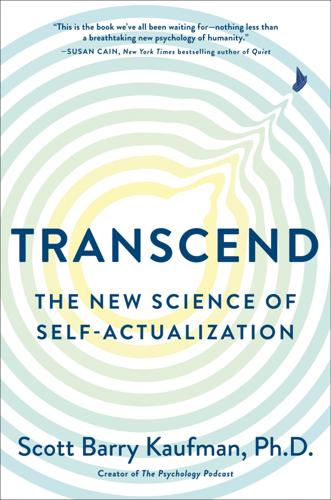
Transcend: The New Science of Self-Actualization
by
Scott Barry Kaufman
Published 6 Apr 2020
In our research, we found that vulnerable narcissism was associated with lower levels of life satisfaction, autonomy, authenticity, mastery, personal growth, positive social relationships, purpose, and self-acceptance in life, as well as a lack of trust in one’s thoughts and feelings, and a profound lack of a sense of self.48,49 We also found an extremely strong relationship between vulnerable narcissism and reports of imposter syndrome. Those scoring high in vulnerable narcissism scored high on statements such as “I tend to feel like a phony,” and “Sometimes I am afraid I will be discovered for who I really am.” It’s less likely that such individuals actually feel fraudulent and more likely that they engage a “self-presentation strategy” that serves as another way of protecting themselves against the potential pain of rejection.
…
In fact, we found that grandiose narcissism is related to reports of greater life satisfaction. But we found that this increased life satisfaction is likely to come with a cost—disconnection from one’s own self. We found that those scoring high in grandiose narcissism reported high levels of imposter syndrome, a weak sense of self, self-alienation, a greater likelihood of accepting external influence, and higher levels of experiential avoidance. Those scoring high in self-esteem showed the opposite pattern, suggesting that self-esteem is tied to a greater sense of connection with one’s own self. That’s not surprising.
…
“appetites,” 35 Hyde, Elizabeth, 121, 123, 207 hypoegoic state of consciousness, 203–4 ideal personality, 84–85 Ikarians, 52 ikigai, 52 Ikiru (movie), 153 imagination, xxxvi, 107, 108, 109, 114, 115, 143, 146, 147, 214, 236 “imagination network” (default), 110, 116 “Importance of Falling in Love with ‘Something,’ The” (Torrance), 162 imposter syndrome, 68, 74 inclusive identity, 134 incomes, Americans’, 7 individual differences, xxix–xxx individualism/altruism dichotomy, 205 individuality and love, 141 industrial (managerial) psychology, 151 infant attachment, 16 See also childhood attachment influential moral figures, 167–69 in-group positivity, 77–78 “inner core,” xxvii inner/outer dichotomy, 153 insanity/being sane in insane society, 159 insecurity, xxxiii, 10, 13, 94, 100, 144–45, 159, 160, 165, 175, 194, 204, 236–37, 238 See also security “insecurity cycle,” 5–6 inspiring (quality of moral exemplar), 168 instrumental agency, 169 instrumental social value, 61, 62, 64, 73 integral theory, 226 integrated hierarchy of needs, xix, xxiv, xxv, xxviii, xxxi, xxxiv, 44, 148, 163, 167, 175, 245 integrity, 89, 136, 137, 174, 183 intellect, 94, 108, 108, 111–14, 116 intellectual curiosity, 107, 108, 112, 113 intelligence, xx, 30–34, 116–17, 126 intensity seeking, 101, 101n “internal working models” of others/self, 15–16 Interpretation of Dreams, The (Freud), 54 intimacy, 21, 34, 37, 38, 41–43, 46, 53, 125, 146, 222, 238 “intrinsic conscience,” 159 intuition, 89, 108, 109–10, 115, 240, 242 Inzlicht, Michael, 10 IQ, 63, 108, 112, 113, 116, 222, 223 isolation (given of existence), xxxvii Jacobs, W.
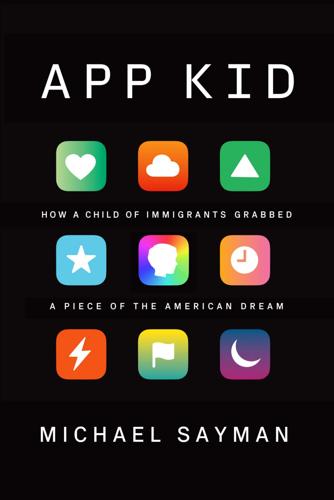
App Kid: How a Child of Immigrants Grabbed a Piece of the American Dream
by
Michael Sayman
Published 20 Sep 2021
* * * — I really needed to get a handle on that voice in my head. I was hearing it more and more lately. At Facebook, they were always encouraging us to take advantage of their free mental health counseling. Apparently, something called Imposter Syndrome was super common among Facebookers. If you haven’t heard of it, Imposter Syndrome is the persistent belief that you don’t deserve to be in the job you’re in, no matter how hard you’ve worked for the position. It’s the unshakable sensation of not being good enough to be where you are right now—that you’ve succeeded due to some crazy stroke of good luck, not because of your talent or accomplishments.

There Is Nothing for You Here: Finding Opportunity in the Twenty-First Century
by
Fiona Hill
Published 4 Oct 2021
She had a stern, harsh look on her face. She was completely serious. She clearly couldn’t fathom it. I too was shocked. And not just because of my classmate’s disparaging comment. Like most people who find themselves well outside their social and cultural comfort zone, I had an acute case of imposter syndrome. At any moment I expected failing grades and expulsion. I felt exposed in all my classes, knowing that except for my forays into the Encyclopedia Britannica, I had very little experience with the material other students had covered in their private schools. For a significant number of students, St.
…
Even when it was clear that I wasn’t the secretary or notetaker in academic seminars or meetings, my gender would get in the way. I would make a point and wait for a response, only to have some man repeat what I had said a few minutes later in a slightly different formulation. Every time it happened, imposter syndrome would kick in. I wondered, was it my impenetrable North East accent, did no one understand? Was it a stupid or irrelevant point? Was I simply not clear? Does everything a woman say have to be repeated by a man for it to be heard? On occasion I would find myself getting lectured on the very set of issues I worked on directly, sometimes even having to sit and listen as someone cited back something I had written in an article or policy paper, oblivious to where they had read it and whose idea it was.
…
After a while, despite my persistent notetaking, I was at so many meetings that I eventually seemed to blend into the background as far as President Trump was concerned. On every occasion I took careful note, not just notes, of what was happening around me. Ultimately, however, I wasn’t just suffering from imposter syndrome in the Trump White House—I was for Trump and his inner circle an actual imposter. I was an interloper. As one former White House official related the situation to Adam Entous, “Forgive me, Fiona’s attractive, but he [Trump] doesn’t trust women that are kind of nonplayers in his world.” Prom Night No matter where or who you are, it seems, women can never fully escape from being judged by the way they look and dress.

Clan Corporate
by
Stross, Charles
Published 28 Aug 2006
“You’ll pass,” she said. “With the jewelry, of course. And the posh frock. As long as you don’t let your mouth run away with you.” Her cheek twitched. “As long as you remember to be Helge, not Miriam.” “I feel like I’m acting all the time!” Miriam protested. “Of course you do.” The duchess finally smiled. “Imposter syndrome goes with the territory.” The smile faded. “And I didn’t do you any favors in the long run by hiding you from all this.” She gestured around the room. “It becomes harder to adapt, the older you get.” “Oh, I don’t know.” Miriam frowned momentarily. “I can deal with disguises and a new name and background; I can even cope with trying to learn a new language, it’s the sense of permanence that’s disconcerting.
…
“So you’re going to go back to your residence and wait there, and work on your, what you think of as, your cover identity. Countess Helge voh Thorold d’Hjorth. You’re not going to be allowed to be Miriam Beckstein again until we’re sure we can trust you. We know about your dissociative tendencies, this unfortunate tendency toward imposter syndrome. It’s time we gave you some help in breaking the habit. Think of it as an enforced vacation from the pressures of modern life, hein? Practice your hochsprache and persist with the gentle arts, and try not to overexert yourself too much. One way or the other, you’re going to make yourself of use, even if only to give us another generation of world-walkers or a royal heir.
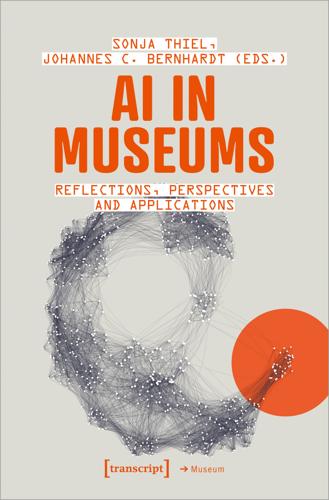
AI in Museums: Reflections, Perspectives and Applications
by
Sonja Thiel
and
Johannes C. Bernhardt
Published 31 Dec 2023
Archives, GPT-2, and Fake News’, Marion Carré shows how technology is already challenging the ‘archives’ and presents a project that uses GPT-2 for the creation of fictitious archives and affects questions about the authenticity and reliability of information. On the flip side, Roland Fischer’s paper, ‘Imposter Syndrome: GPT-3 between Fact and Fiction’, examines the role of storytelling and fiction in the context of GPT-3, shedding light on the blurred boundaries between human- and machine-generated content. Taken together, the papers in this section offer helpful perspectives and possibilities on how cultural institutions can approach the field of AI and redefine their role as spaces for reflection, discourse, and education in the culture of digitality.
…
AI’s dual role in facilitating forgery and aiding detection is explored, thus emphasizing the importance of critical thinking and education as safeguards against deception. Museum professionals play a crucial role in raising awareness about the challenges posed by digital manipulation. Roland Fischer, Imposter Syndrome: GPT-3 between Fact and Fiction This text delves into the role of fiction and storytelling in the context of GPT-3, a powerful language model with the ability to generate human-like text. Drawing from fiction theory and historical examples of illusionism such as the Mechanical Turk, the discussion highlights the potential of GPT-3 for entertainment and creative applications.
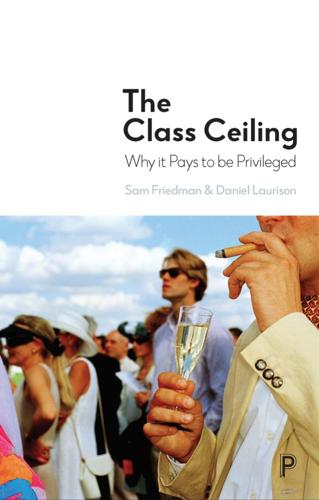
The Class Ceiling: Why It Pays to Be Privileged
by
Sam Friedman
and
Daniel Laurison
Published 28 Jan 2019
And I used to have a recurring dream that I hadn’t passed my exams. I vividly remember it – it was the day I qualified and I hadn’t passed, I’d been found out. And it was only when I finally told someone about it, a career coach here, they were like “you really need to get on top of this”. Such lingering feelings of insecurity, a kind of extreme form of ‘imposter syndrome’, were relatively common among the longrange upwardly mobile. As with Philip, these feelings were often initiated by an abrupt ‘moment’14 of upward mobility, of being catapulted into an elite firm or in the aftermath of a significant promotion. These sudden life events had often left an enduring 179 The Class Ceiling emotional residue, a suspicion that they somehow “aren’t good enough”, that they are a “fraud”, or that a fall was just around the corner.
…
-C. 306n23, 308n14 Bourdieusian approach 186–8, 195 Breen, R. and Goldthorpe, J.H. 294n2 Bridge Group 229, 231, 235, 236 Socio-economic diversity in the Civil Service Fast Stream 230 British Broadcasting Corporation see BBC British Social Attitudes survey 2016 286n31 Britton, J. et al 295n18 C capital (Bourdieu) Bourdieu on 186–7 class as total 196–7 cultural 14–17, 162, 164, 197, 199–203 dimensions of 194 economic 14, 24, 90, 93, 105–6, 197 embodied cultural 154, 187, 197, 199–208 ‘field-specific’ 199, 201–3 social 14, 110, 149, 162, 164 technical 141, 187, 203–8 Carter, C. and Spence, C. 159 Casciaro, T. and Lobo, M.S. 301n18 CCIs see cultural and creative industries CEOs (Chief Executive Officers) 33fig, 35fig, 40, 41fig, 42fig, 53fig Charlesworth, S.J. 314n71 Chetty, R. 192 Chinese ethnic group 42–3, 49fig, 51, 52fig Civil Service, Opportunity Network 237 ‘Clarendon Schools’ 148 class ‘death of ’ 5–6 origins and destinations 10–17 as multidimensional 196 class pay gap 7–9, 47–55, 57–70 within companies 85 company size and 67–9 demographic differences 59–60 drivers of 70fig, 86fig, 217fig education and 61–5 and elite occupations 52–5 and gender pay gap 50–1 and racial-ethnic pay gap 51–2 class-structural approach 189 client matching 147, 158–64 comportment 14, 132, 200 confidence cultural 154 fallacy of 23–7 and fitting in 124, 130, 151 misinterpretation of 102 and progression 19 and sponsorship 114 and typecasting 99 confidentiality 274 contest mobility 109 Coopers (architects) 81–3, 105–7 belonging 174–5 culture of 164–8 and embodied cultural capital 206 female representation 82, 120–1 fitting in 140–3 glass ceiling 143, 207 hierarchy 83 internal and external culture 164–8 merit 225–6 opting out 175 parental financial support 105–7 privilege 82, 83fig 361 The Class Ceiling racial-ethnic representation 82 researching 246–7 and sponsored mobility 118–21 working-class 82, 83fig Corbyn, J. 287n39 corporate senior management 33fig, 35fig, 41fig, 42fig, 53fig Crawford, C. et al 295n21 Crenshaw, K. 289n75 cultural affinity 111, 116, 122, 214 cultural and creative industries (CCIs), precarity of 91 ‘EGP’ (Erikson, Goldthorpe and Portocarero) approach 288n53 Elias, N. 302n3 elite signals 148, 156 Ellis, A.J. 306n20 embodied cultural capital 154, 187, 197, 199–208 emotional cost 173–4, 175, 178–83 engineering 33fig, 35fig, 40, 41fig, 42fig, 53fig, 54 Equality Act 2010 237, 296n1 The Equality Trust 238 Erickson, B.H. 307n38 ‘cultural competency’ 126 ‘cultural guides’ 120 F failure, anticipation of 173 ‘Fairer Scotland Duty’ 237 fairness 8, 9–10 feeding back 219–20, 273 Feinstein, L. 294n5 field (Bourdieu) 186–7, 198–9 ‘field-specific capital’ 199, 201–3 film and television industry access to 33fig class pay gap 53fig, 54–5 education 136 female representation 40, 42fig, 73 micro-class reproduction 34, 35fig racial-ethnic representation 40, 41fig, 73 social exclusivity 40, 74fig finance 33fig, 35fig, 41fig, 42fig, 53fig, 54 fire service chiefs 33fig, 35fig, 40, 41fig, 42fig, 53fig first class degree, earnings premium 38, 39fig, 64 fitting in 123–44 behavioural codes 134–40 ‘glass slipper’ 125–7 merit 144 polish 127–34 technical skill 140–3 cultural capital 14–17, 162, 164, 197, 199–203 D decomposition 58, 269 degree classification 63–4 deregulation 7, 246 disability 39–40, 41–2, 49, 51 discrimination 17, 40, 45, 57, 144, 224–5, 276 domestic migration 66–7 Dorling, D. 299n22 double disadvantage 50–2, 191, 218, 302n30 dress codes 126, 128–9, 134–5 Durkheimian approach 311n34 E Eagly, A.H. and Carli, L.L. 289n71 education and access to elite occupations 35–9 Bourdieu on 172–3 and embodied cultural capital 199–200 as ‘equaliser’ 61–5 grammar schools 6, 166 private 46, 78–81, 94, 104, 121, 123, 157, 159, 162, 172 public (elite private) 148–9 362 Index Fleming, P. 125–6 France, class pay gap 47 Friedman, S. 308n14 Future Leaders scheme 123–4, 244 G gatekeepers 114, 132, 144, 147–8, 166, 187 gender anxiety and 180–2 and dress 129 and merit 226 and technical capital 207 and tradition 39–40 under-representation of females 42fig see also double disadvantage; glass ceiling; intersectionality gender pay gap 45–6, 49, 61, 143, 221 ‘gig economy’ 91, 241, 270 glass ceiling 17–19, 45, 120, 143, 186, 190–1, 218 glass escalator 310n24 glass slipper 124–7, 128, 132, 133, 136, 142–3 globalisation 7, 286n17 Goldthorpe, J. 6, 8, 10, 189, 311n31 Goldthorpe, J. et al 309n7, 311n30 Goodall, L. 46 grammar schools 6, 166 Granovetter, M. 110 gravitas 159–60 H habitus (Bourdieu) 14–15, 186, 194, 198 Bourdieu on 288n69, 307n9, 308n1, 308n18, 314n80, 314n81 Hall, T. 45–6 Harman, H. 237 Heath, A.F. 310n20 hexis 200, 202 highbrow culture at 6TV 145–7, 150–6, 206, 219 as barrier 149–50, 164, 167 Bourdieu on 200 and privileged networks 168 Ho, K. 306n28 Hoggart, R. 307n35 homophily 214–15 and glass ceiling 17, 190 sponsorships and 113–14, 119, 120, 121 horizontal segregation 69, 272 Hout, M. 61 human capital 88, 90 I imposter syndrome 179 Indian ethnic group 42, 43, 49fig, 52fig individualisation 6, 26, 114, 144, 162 industry, decline in 6 Ingram, N. and Allen, K. 126 insecurity economic 91, 93 emotional 120, 139, 173, 179–83 institutionalised cultural capital 199, 315n92 intergenerational transfer 9, 15, 192, 193, 222 internships 149, 234 intersectionality 18–19, 40–4, 139, 190–1, 223, 233, 293n17 see also double disadvantage intra-generational mobility 193 IQ (intelligence quotient) 57, 61 isolation 181–2 IT 33fig, 35fig, 41fig, 42fig, 53fig J Jencks, C. et al 290n83, 311n29 Johnson, B. 57 Jones, D. 306n20 journalism class pay gap 53fig, 294n19 363 The Class Ceiling female representation 42fig Labour Force Survey (LFS) 264t micro-class reproduction 35fig privilege and 32, 33fig, 205 racial-ethnic representation 41fig and social mobility 30fig Just Fair 238 Lizardo, O. 149 ‘locus of control’ 23 London City of 19, 132, 212 parental financial support 24 privileged employment 22, 66, 69, 80, 106, 212 salary 66–7 senior positions 77 K Kitagawa, E 320n23 Koppman, S. 305n18, 313n58 KPMG 78, 230 Kuhn, A. 17 Kynaston, D. 132 M Macron, E. 29 management consultancy 33fig, 35fig, 41fig, 42fig, 53fig Matthew, M. 304n30 May, T. 7, 29 measurement of class background 230–2 medicine 33fig, 35fig, 41fig, 42fig, 53fig ‘merit’ measures 67fig, 68fig meritocracy 232–3 City of London 132, 133 and cultural similarity 111, 168–9 as driver 58, 62, 65 education 21–2, 61–3 and fitting in 144, 212–14, 215–19, 220–2 justification 88 ‘occupational effects’ and 198–9 and popular culture 179 and privilege 102, 103, 226–7 and progression 4–5 and sponsorship 118, 122 and technical capital 204 in UK 5, 7, 38–9 Weber on 4 meritocratic ideal 209, 210, 298n4 meritocratic legitimacy 8, 104 methodology 239–83 6TV 242–4 confidentiality 274 Coopers 246–7 elite occupation definition 265–6 L Labour Force Survey see LFS Lamont, M. and Lareau, A. 315n88 language 15, 128, 137–9, 151, 155–8, 306n23 see also speech Lareau, A. 15–16, 120 law class pay gap 53fig education 37 female representation 42fig micro-class reproduction 34, 35fig privilege 32, 33fig, 54, 85 progression in 19 racial-ethnic representation 41fig unpaid internships 234 Lawler, S. 18, 51, 308n15 Lawler, S. and Payne, G. 302n6 legal protection 237–8 Lexmond, J. and Reeves, R. 302n11 LFS (Labour Force Survey) 10, 30–1, 65, 72, 189–90, 240–3, 263–8, 271 life sciences 33fig, 35fig, 41fig, 42fig, 53fig linearity of career 196 Lineker, G. 45 ‘linguistic capital’ 306n23 364 Index feeding back 219–20, 273 interviews 247, 248t–60t measurement of social mobility 262–5 Turner Clarke (TC) 244–6 see also LFS (Labour Force Survey) microaggressions 17, 190, 224–5, 304n29 micro-class reproduction 34–5, 192 middle-class socialisation 126 Mijs, J.J.B. 298n4 Milburn, A. 9, 29–30 Miller, N. 229 Mills, C.W. 132, 148, 319n16 mixed race ethnic group 42, 43fig, 49fig, 51, 52fig Morrissey, D. 84 Mosca, G. 319n16 multiple race ethnic group 42 Murray, C. 57 N ‘neo-institutional theory’ 301n21, 303n26 networks and highbrow culture 149–50, 168 and inequality 121–2 old boys’ network 17, 109, 132, 211 and sponsorship 110, 115, 118 Norway, class pay gap 47 NS-SEC (National Statistics Socio-Economic Classification) 11, 222, 263–5 nudge theory 307n37 O objectified cultural capital 199 ‘objective merit’ 2, 168, 212, 214, 221 O’Brien, D. 241 ‘occupational effects’ 198–9 ‘old boys’ network’ 17, 109, 132, 211 ‘opportunity cost’ 182 ‘opportunity hoarding’ 148, 164 other Asian ethnic group 43fig, 49fig, 52fig otherness 146 Oxbridge 2, 3, 62, 63, 148, 155 P PACT (Producers Alliance for Cinema and Television) 243, 297n5 Paired Peers project 299n18 Pakistani ethnic group 40, 41fig, 42fig, 43–4, 49, 51, 52fig parental financial support 87–107 for actors 87–105 at Coopers 105–7 at Turner Clarke (TC) 105–7 parental occupation 31–2, 231–2, 240, 263 performing arts 33fig, 41fig, 42fig, 53fig Pfeffer, J. 290n83, 320n28 Piketty, T. 286n25 police service chiefs 33fig, 35fig, 40, 41fig, 42fig, 53fig Policy Exchange 286n31 polish 19, 127–34, 142, 159, 161, 180 popular culture 149, 202, 219, 307n38 primary socialisation 153–4, 194, 199, 202 private sector pay 68 Producers Alliance for Cinema and Television see PACT professional and managerial sector, increase in 6, 59 professionalism 159 progress in career 19–20, 45–55 class pay gap 47–55 cultural barriers 164 and education 62 female 143, 167 fitting in 124–5, 129 and merit 4, 102–3, 109, 111, 210 365 The Class Ceiling and parental financial support 90, 101, 106 and polish 127–34 self-elimination 173 sponsorship 113, 115, 118, 121 technical capital and 203 public assets, sale of 7 public sector access to 32, 33fig, 34 class pay gap 53fig, 68 female representation 42fig micro-class approach 35fig racial-ethnic representation 41fig public spending cuts 7 Puwar, N. 158 R racial-ethnic minorities at 6TV 139 access to elite occupations 20–1, 43fig at Coopers 82 and glass ceiling 190 and higher education 280fig, 281fig and IQ 57 pay gap 49–50, 283fig progression 21 at Turner Clarke (TC) 114 and upward social mobility 18 see also double disadvantage; intersectionality Received Pronunciation see RP Reeves, A. and de Vries, R. 315n91 Reeves, R. 149 regional differences 66–7, 80, 106 regression analysis 58, 268–9 Reith, Lord 306n21 RIBA (Royal Institute of British Architects) 175 Rivera, L. 19, 113, 129, 131, 223 Rollock, N. 289n80 Royal Institute of British Architects see RIBA RP (Received Pronunciation) 128, 156–8 Russell Group universities 38, 39fig, 62, 63fig, 100 S Saunders, P. 294n2 Savage, M. 205, 207 Sayer, A. 299n20 science, career in 33fig, 35fig, 41fig, 42fig, 53fig self-elimination 171–83 cultural mimicry 177–8 emotional self-protection 175 opting out 174–5 playing safe 175–7 self-worth 173 service-based economy 7 Sherman, R. 103 Skeggs, B. 18 SMC (Social Mobility Commission) 9, 57 social bridging 149 social capital 14–15, 110, 149, 162, 164 social closure 147–50, 189 social mobility, measurement of 30fig, 262–5 Social Mobility Business Compact 230 Social Mobility Commission see SMC Social Mobility Employer Index 230 Social Mobility Index 2017 305n3 Socioeconomic Duty 237–8 ‘sociology of elite recruitment’ 188–9 space, egalitarian organisation of 79 speech 126, 128, 156–8 see also language speed of career 176, 196 Spence, C. and Carter, C. 298n16 sponsorship 109–21 at 6TV 115–18 366 Index at Coopers 118–21 formalisation of 235–6 at Turner Clarke (TC) 111–15 standard mobility analysis 186, 198 standard mobility tables 188, 191–2 stereotyping 17, 218, 225, 303n28 studied informality 134–40, 142, 150 Sweden, class pay gap 47 ‘symbolic capital’ 201 ‘symbolic mastery’ 15, 16, 200 traditional/technical divide 32–4 Trump, D. 29 Turner, R.
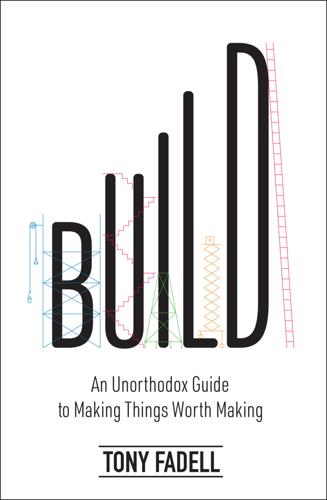
Build: An Unorthodox Guide to Making Things Worth Making
by
Tony Fadell
Published 2 May 2022
Everywhere I looked I saw the same bad suit I’d ditched after my first General Magic interview. I was twenty-five years old and had never really managed anyone, never built a team. Now I was one of the CTOs in a massive company of almost 300,000 people. I’d experienced plenty of failure, but this was truly a new and exciting set of experiences to fail at. The rush of imposter syndrome was almost overwhelming. Then they told me that anyone who joined the team would have to be drug tested. Nothing clears your mind like something that unbelievably stupid. Nobody in Silicon Valley would put up with that—pee into a cup to get an engineering job? I wouldn’t be able to hire a soul.
…
See also General Magic; iPhone; iPod; Nest Labs; Nest Learning Thermostat; Nest Protect; Philips Nino; Philips Strategy and Ventures Group; Philips Velo at Apple, xviii, 19, 55, 69, 78, 80, 81, 82, 84–86, 91, 93, 96, 117, 136, 163, 237, 303, 320, 374 Apple computer of, xv–xvi biography of, xiv–xix, 294 career of, xiv–xix failures of, xix, 3–4, 181 family of, 163, 175, 176 at Future Shape, xix as mentor, xi–xiv, xix–xx mentors of, xi, xii, 164 passion of, 68–69 at Philips, xvii, 18, 36–37, 45–46, 58, 61, 77, 81, 88, 89, 96, 125, 129–30, 209, 374 programming experience in school, xiv–xv at Quality Computers, xv startups of, xiv, xv–xix, 2, 6, 7, 46, 164, 181, 199 failure analysis of, 135 learning from, 5–6, 7, 9, 10, 13, 19, 119, 223, 253, 264, 329 startups and, 199 finance acquisitions and, 315, 316, 318, 353 product management and, 281, 285, 287 role of, 48 startups and, 182, 210 financial products, 202 Flint, Peter, 107n Free, 199 Frog, 283 Fuse Systems, xviii, 88–92, 89, 208 Future Shape, xix, 365, 374 GAP, 341 Gelsinger, Pat, 321–22 General Magic Bill Atkinson and, 2–3, 12, 27, 165 culture of, 46 Tony Fadell as engineer at, xvi–xvii, 2–3, 6, 7, 10–11, 13, 21, 24, 27, 35, 96, 129–30, 208, 327, 374 failure of, 3, 13, 18, 24, 37, 58, 90, 373 Andy Hertzfeld and, 2–3, 12, 27 launch of, 11–12 Magic CAP, 15 Pierre Omidyar and, 188 Philips as partner and investor in, 36, 37 Pocket Crystal, 1, 2, 12 private network system of, 12 problems with products of, 15 smartphone of, 130 Sony Magic Link, 12–13, 12, 15, 24, 31, 35–36, 58, 139–40 structure of, 10–11, 13 target customer of, 35–36, 58, 130 technology focus of, 15 TeleScript, 15 time constraints for, 139–40 General Magic Movie, 2n Glengarry Glen Ross (film), 296 goals of meetings, 255 moving forward with, 7, 19, 33 product development and, 128 team’s goals powering company goals, 237 Google Ads, 314, 346 all-hands meetings of, 255, 360 Alphabet created by, xix, 314 Android acquisition, 328 culture of, 313, 346, 349, 351–52, 359 disruption and, 123 individual contributors recognized by, 47 job applications with, 23 Nest acquisition of, xix, 304, 310–17, 338, 345–52, 354–55, 359–61, 371 Nest reabsorbed by, 319–20 Nest sold by, 317–19, 367 perks at, 358–59, 362 product managers and, 284 profitability of, 160 project rhythms of, 146 restructuring of, 314 review cycles of, 51 Search, 284, 314, 346 target customer of, 205 Google Facilities, 315 Google Fiber, 314 Google Glass, 16, 119 Google Nest, 55, 80, 278, 313, 314–17, 354–55 Google Store, 312, 317 Google Ventures (GV), 314, 349 Google X, 314 Grove, Andy, 322 Guenette, Isabel, 230 Gurley, Bill, 21 habituation, 262, 262n heroes, connections with, 20–25, 27 Hertzfeld, Andy, 2–3, 12, 20, 27 Hodge, Andy, 92 Hololens, 124 Home Depot, 160, 202 home stereo systems, 87 home theaters, 88, 90 honesty, in management, 44, 51 Honeywell, 117, 124–25, 164, 303–4 human resources (HR) breakpoints and, 255–56 dealing with assholes and, 72–73, 74 hiring and, 29, 215–17, 229–41 interviews and, 21, 258 legal team and, 302, 305 meetings of, 254 quitting and, 76, 81, 85, 86 startups and, 89, 182, 184, 210 team meetings and, 240, 241 team size and, 247 HVAC technicians, 124–25, 166 IBM, 121, 148 ideas chasing process, 171, 172, 173–77, 179, 373 elements of, 171 as painkillers, not vitamins, 172 problems solved by, 171, 172 research on, 171–72, 173, 174, 178 spotting great ideas, 124, 171–79, 180, 182, 327, 328 storytelling and, 172, 174, 177–78 vision for, 178 IDEO, 261, 283 IKEA, 106, 288 imposter syndrome, 37, 50 individual contributors (ICs) crisis and, 220 leadership of, 47 management contrasted with, 43 as managers, 238, 248, 251–53 perspective of, 26–27, 28, 29, 30, 31–33, 48, 58, 331 reverting to, 366 as stars, 47 trajectory in organizations, 47, 251–53 information gathering, 21 Instagram, 156, 205 Intel, 148, 189, 322 intellectual property (IP), 305, 306 internal customers, 30, 32, 233, 325 Inventec, 92 investors and investment angel investors, 173, 189–90, 192, 198–99, 200 board members and, 335, 337, 340–41 cyclical nature of, 90, 190–91 in Nest Labs, 164, 165–66, 177, 178 relationships and, 189–90, 192, 193–98, 199, 200 in Silicon Valley, 90, 192 startups and, 169, 181, 184, 189–200 storytelling and, 111, 178 iPad, 163 iPhone development of, xiv, xviii, 1, 15, 93, 122, 128, 132–33, 140–42, 142, 156, 163, 169, 175, 176, 283, 327–29, 343 glass front face of, 110, 329 launch of, 108–10, 117, 203 profitability of, 156 size of, 130, 131, 132 team of, 234 time constraints on, 140–41 touchscreen keyboard for, 110, 128–33 value of, 156, 176 iPod customer personas for, 287 defining feature of, 120, 140 design of, 263, 267–68 development of, xiv, xviii, 19, 24, 54, 55, 91–92, 91, 119–21, 133–35, 163, 165, 167, 169, 187, 202, 208–9, 268–69, 286, 347 full battery of, 269 iPod-phone model, 141 launch of, 84, 92–93, 92, 96, 108, 117, 133–34, 213 profitability of, 155 tagline “1000 songs in your pocket,” 87, 92, 112–13, 286–87 team of, 234 iPod Nano, 286–87 iPod Touch, 163 Isaacson, Walter, Steve Jobs, 84 iTunes, 119–20, 303 Ive, Jony, 267 Jobs, Steve on analogies, 112–13 on battery life, 121, 287 board of directors meetings and, 334, 339 design thinking and, 267 iPhone development, 15, 128–29, 130, 132, 133, 156 iPhone launch, 108–9 iPod development, 92, 120, 133–35, 187, 208–9, 268–69, 347 on lawsuits, 303 leadership style of, xii, 79, 82, 85, 203, 348, 358 level of detail expected by, 49 on MacWorld conferences, 147–48 on management consulting, 17 on marketing, 271, 277 Not Invented Here Syndrome, 327 as parent CEO, 329 passion of, 69, 70 on processors, 148 respect for, 329–30 Andy Rubin and, 327–28 Wendell Sander and, 24 on “staying a beginner,” 268 storytelling of, 177, 286 vacations of, 207–8 walking of, 214 Joswiak, Greg, 286–87 JPMorgan Chase, 321 Kahneman, Daniel, 171 Kare, Susan, 12 Kelley, David, 261, 283 Kickstarter, 158 Kindle, 118 Kleiner Perkins, 164 Kodak, 122–23, 327 Komisar, Randy, 164, 339–40 lawsuits, 117–18, 300, 302, 303–4 leadership characteristics of, 14, 326–27 crisis and, 221–22 decisions and, 61, 62–63 of individual contributors, 47 of Steve Jobs, xii, 79, 82, 85, 203, 348, 358 mentors and, 257 micromanagement contrasted with, 45 percentage of psychopathic traits in, 65 perspective of, 32 sitting on your idea, 63 for startups, 183 style of, 53 of teams, 37–41, 45, 46, 247 trust of, 62, 64, 330 vision for, 18 legal team contracts and, 300, 302, 305 lawsuits and, 117–18, 300, 302, 303–4 marketing and, 276, 306 outside law firms and, 300–302, 305 product management and, 287, 288, 306 role of, 24, 302–8 sales and, 295 startups and, 227 Le Guen, Sophie, 289 Letterman, David, 311 life, as process of elimination, 238, 253 limited partners (LPs), 189, 192, 198 Linux servers, 201 Lovinsky, Dina, xx Lowe’s, 160 Lutton, Chip, 117, 303, 306, 308 Macintosh, 3, 91, 108, 121, 133–34, 148, 208 McKinsey, 17 MacWorld conferences, 147 MagicBus, 24 Magic CAP, 15 Magic Leap, 16 management.
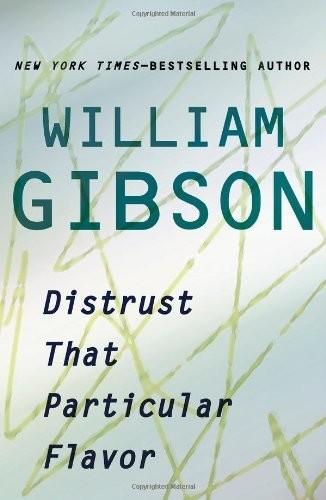
Distrust That Particular Flavor
by
William Gibson
Published 3 Jan 2012
Generally they make me even more uncomfortable to write than articles, but later, back in the place of writing fiction, I often discover that I have been trying to tell myself something. When I taught myself to write fiction, I eventually accepted that I had learned to do what passes for the writing of fiction when I’m the one doing it. The volume on the imposter-syndrome module decreased. Writing nonfiction, I’ve often felt as though I’m applying latex paint to the living room walls with a toothbrush. The volume on the module shoots up. Perhaps people will assume that the resulting texture is deliberate. Perhaps not. Writing fiction is a unique activity for me, a neurological territory, an altered state.

Slow
by
Brooke McAlary
Published 22 Aug 2017
DO THE WORK Have you heard the term ‘to earn your chops?’ It essentially means to do the work. To put in the hours and commit to the process of gaining skill or knowledge in a particular area. For example, to earn your chops in comedy means to go through the learning of the craft, the open mic nights, the bad gigs, the awkwardness, the imposter syndrome, the copying and the finding your feet and your voice and your point of view, in order to emerge on the other side with skill, insight, a sense of what works and something to say. (I know all of this because I read BOTH Amy Poehler and Tina Fey’s books, as well as Judd Apatow’s most excellent Sick in the Head.
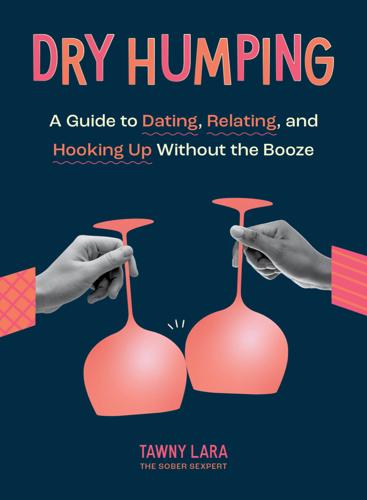
Dry Humping: A Guide to Dating, Relating, and Hooking Up Without the Booze
by
Tawny Lara
Published 19 Sep 2023
(Both shows also have storylines about alcohol abuse.) There is now also accurate bi/pan and trans representation in shows like The Bold Type, Euphoria, Schitt’s Creek, Pose, and Crazy Ex-Girlfriend. (The last of these shows even offers a killer bisexual anthem called “Gettin’ Bi.”) Nuanced bisexual representation in culture eclipsed the imposter syndrome that told me I wasn’t “bi enough.” To me, bisexuality means experiencing attraction to all genders regardless of my relationship status, sexual history, or sexual future. I don’t need to validate my sexuality like a parking ticket—and I don’t need to drink alcohol to get in touch with it. But regardless of improvements on screen, I could never have achieved this level of honesty, awareness, and self-love if I still drank.

I Want to Be Where the Normal People Are
by
Rachel Bloom
Published 17 Nov 2020
And it occurred to me that I didn’t know what the fuck I was doing. I didn’t know how to pose, how to smile, how to step to the left so Grant Gustin could now get his picture taken. Plus, I had a coffee shit attack brewing and I still had half an hour of on-camera interviews to do. The inklings of imposter syndrome were brewing within me along with my coffee farts. When I settled into my dressing room alone, I was grateful for a moment to breathe. But then another publicist I’d never met before (or maybe I’d met her five minutes ago, honestly I had no idea) walked in. Before I could ask her how long it would be until the presentation, she closed the door and asked, “Hey … do you have another dress?”
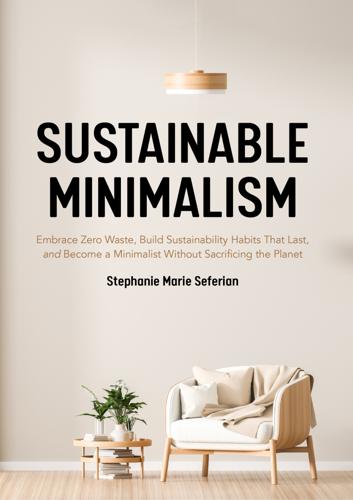
Sustainable Minimalism: Embrace Zero Waste, Build Sustainability Habits That Last, and Become a Minimalist Without Sacrificing the Planet (Green Housecleaning, Zero Waste Living)
by
Stephanie Marie Seferian
Published 19 Jan 2021
Bloomsbury 2019. 6 Mary MacVean, “For Many People, Gathering Possessions Is Just the Stuff ofLife,” Los Angeles Times, March 21, 2014, https://www.latimes.com/health/la-xpm-2014-mar-21-la-he-keeping-stuff-20140322-story.html. 7 Margot Adler, “Behind the Ever-Expanding American Dream House,” NationalPublic Radio, July 4, 2006, https://www.npr.org/templates/story/story.php?storyId=5525283. 8 Dafna Goor et al., “The Imposter Syndrome from Luxury Consumption,” Journal of Consumer Research 46, no. 6 (April 2020): 1031–1051. 9 Encyclopedia Britannica Online, “Denis Diderot,” by Robert Niklaus, lastmodified October 1, 2020, https://www.britannica.com/biography/Denis-Diderot. 10 Denis Diderot, “My Old Dressing Gown,” trans.
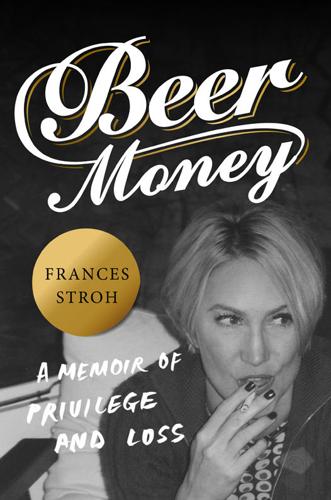
Beer Money: A Memoir of Privilege and Loss
by
Frances Stroh
Published 2 May 2016
I’d been out every night for a solid month since arriving in August, raging on adrenaline ever since I’d been awarded a Fulbright for a year of study in London to complete my Master of Fine Arts. With the ascension of the Young British Artists—stars like Damien Hirst and Tracey Emin—London was the epicenter of the art world. Some days I had Imposter Syndrome, unable to believe my good fortune. Then I reminded myself I was here to begin my life anew, put the past behind, and launch my career as an international artist. This was where I would make my name. Who knew? I might never return to the States. Inside the smoke haze of the 606 Club, we were given a table near the stage.

How to American: An Immigrant's Guide to Disappointing Your Parents
by
Jimmy O. Yang
Published 13 Mar 2018
I stopped and stared at her as my brain kept telling me: Don’t stare, don’t stare, don’t stare. But my body was frozen. I’m pretty sure I was experiencing a stroke at that moment. I felt like I was high on LSD, having the trip of a lifetime. This can’t be real life. Six months ago, I was driving drunk assholes in an Uber; now I am eating free salmon next to Harrison Ford? My imposter syndrome kicked into full swing. I felt like I snuck into this party. How did I end up here? I don’t deserve this! These are gods amongst men and I am just a dude who used to pay five dollars to do five minutes at an open mic. I was looking over my shoulder, waiting for a security guard to escort me out.

Maeve in America: Essays by a Girl From Somewhere Else
by
Maeve Higgins
Published 6 Aug 2018
I noticed Ayer darting between groups of people to relay the Kurdish translation, while MJ just stood beside me and translated loudly in Arabic. I asked them both if it would make more sense to divide the room between Arabs and Kurds, thereby getting my first big laugh. Thankfully, they thought I was joking, starting out strong with a controversial political reference, you know, something topical. My imposter syndrome, which had been bubbling away nicely at the manageable level every woman has, was now at boiling point. Naturally, the big question saw its chance and moved in. No family in Iraq has been left unscathed by the past years of war and horror. But, um, cheer up? Comedy is important? My voice comes out stronger when I’m scared, and I heard it begin, very loudly.
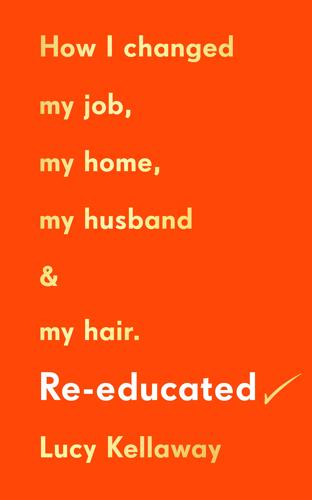
Re-Educated: Why It’s Never Too Late to Change Your Life
by
Lucy Kellaway
Published 30 Jun 2021
I discovered I had a knack for making fun of things – and of my luckless interviewees – and liked trying to make readers laugh. What sustained me all those years was a personality flaw that is common in journalists. I was both insecure and a show-off. I wanted the limelight, but also suffered from imposter syndrome. The great motivation for me, and the reason I worked so hard, was fear of being found out. I could hardly believe I was on such a revered newspaper and was getting away with it. I dreaded making mistakes (which I did too often) but, more than that, I dreaded being no good. From the very first article I wrote I thought: Why does anyone take me seriously writing this, when I don’t have a clue?
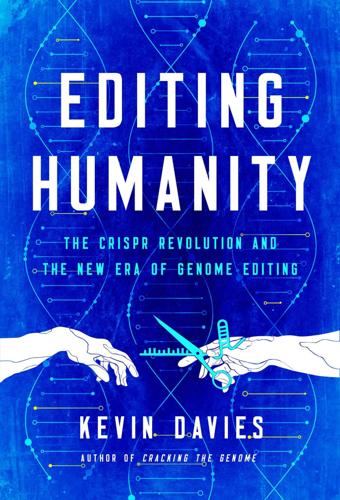
Editing Humanity: The CRISPR Revolution and the New Era of Genome Editing
by
Kevin Davies
Published 5 Oct 2020
Zhang joined the McGovern Institute in January 2011 with a joint appointment at the nearby Broad Institute. His goal was to continue developing TALENs and other systems to engineer genome mutations to model and devise treatments for autism, Alzheimer’s disease, and schizophrenia. Zhang concedes he might have had a slight case of Imposter Syndrome, but it didn’t linger. Le Cong decided to hitch a ride as well. “We’d been working colleagues, it was wonderful to continue our relationship,” he said. Even though he was still technically Church’s graduate student, they shared a taxi over the Harvard Bridge to start their new adventure at MIT
…
* * * In 1978, Hamilton “Ham” Smith, a 6’5” biochemist at Johns Hopkins University, received the call almost every scientist dreams about: he had won the Nobel Prize. Smith, never comfortable in social situations, survived the scrum of press photographers and well-wishers, and a mild case of Imposter Syndrome. Even his mother was surprised: when she heard the news on the car radio, she turned to her husband and said: “I didn’t know there was another Hamilton Smith at Hopkins.”10 Smith’s Nobel was awarded for his serendipitous discovery of restriction endonucleases, a large family of bacterial enzymes that recognize and cut specific DNA sequences or motifs.

Confessions of a Crypto Millionaire: My Unlikely Escape From Corporate America
by
Dan Conway
Published 8 Sep 2019
I was a thirty-nine year old professional with a lot of experience, but the whole vibe of that meeting and the people there felt like the purest form of classical corporate dynamics I’d ever seen. It felt like I’d just stumbled into the production studio for a television show featuring old-school corporate sharks going at it. I was an extra on Romper Room next door who had mistakenly sat my manchild-self down at their table. I knew I had Imposter Syndrome, but I feared I was a real-life imposter. After the meeting I wandered around the office, meeting my new co-workers. They would invariably say, “Oh, the new Fourth Level. Nice to meet you.” For the past hundred years, and still today, Acme has categorized employees by management levels, and it is everything.
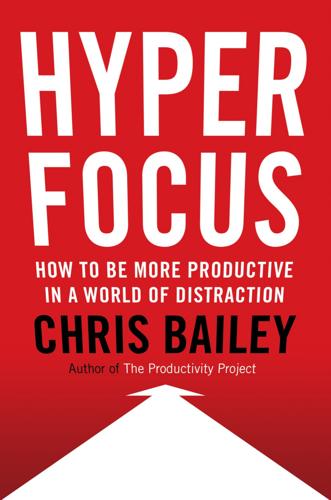
Hyperfocus: How to Be More Productive in a World of Distraction
by
Chris Bailey
Published 31 Jul 2018
.* Einstein worked to attain his genius. As he put it, “I have no special talents, I am only passionately curious.” Asking questions like “What would it be like to race alongside a light beam?” he spun complex webs of dots to formulate his theory of relativity. Despite his accomplishments, even Einstein was afflicted with imposter syndrome, once telling his wife, Elsa, while listening to the cheers of a thousand people outside his hotel room, “I’m afraid we’re swindlers. We’ll end up in prison yet.” While we often find the story of a lone, driven genius compelling, all geniuses have put in time and effort to achieve greatness.

Undoing Border Imperialism
by
Harsha Walia
Published 12 Nov 2013
Grandchild of slaves, he wears a carving of the map of Africa around his neck and has been laid off for months. “Yes,” he stammers, voice rough from days of Parliament cigarettes and the worries of the perpetually unemployed, “I’m an American citizen.” She will talk to Judy in Calgary who will discuss her poor credit rating. Judy once attended a seminar about “the Imposter Syndrome,” a self-help workshop teaching graduate students to self-diagnose their anxieties regarding the place of intellectuals in the neoliberal marketplace. Judy went for the free coffee and muffins. Anything she didn’t have to pay for. Judy will remember inspirational maxims she was force-fed along with crusty baked goods, proclaiming that she is a doctoral student who is confident that she will find a well-paying job.
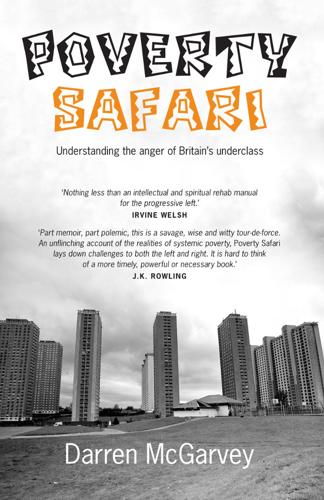
Poverty Safari: Understanding the Anger of Britain's Underclass
by
Darren McGarvey
Published 2 Nov 2017
When the series ended, another was commissioned, this time a three-part show about Shettleston, a housing scheme which had among the worst health statistics in the country. I had a growing public profile and was involved with several organisations as a volunteer while making a name for myself as a local rap artist. But whether it was low self-esteem, imposter syndrome or just a self-sabotage instinct, I began to question people’s motives for wanting to help me. Beneath everything, all I was looking for was connection; to feel understood, heard and supported. To feel respected, safe and loved. The praise and platforms I received certainly made me feel I was heading in the right direction, but once the novelty wore off and I began to consider what was going on more deeply, some things started bothering me.
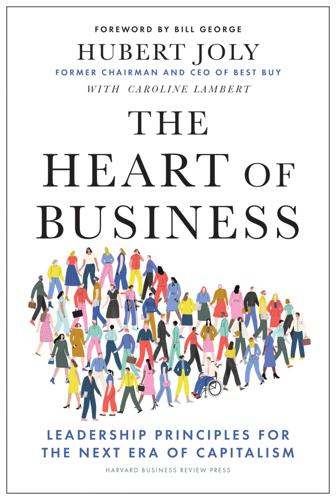
The Heart of Business: Leadership Principles for the Next Era of Capitalism
by
Hubert Joly
Published 14 Jun 2021
Blankfein shared with us that, every day while shaving, he asked himself, “Is it today? Is it today that the world is going to realize that I am not competent for this job?” Here was one of the most successful bankers in the world, and he was doubting his own abilities. Most leaders I know—myself included—suffer from the same imposter syndrome. That syndrome is born in part out of the misguided belief that leadership is an innate ability, emerging out of a level of intelligence, self-confidence, and charisma that you’re born either with or without. If it were true, there would be just a few exceptional beings who could do the job, and the rest of us would be out of luck.

Your Life in My Hands: A Junior Doctor's Story
by
Rachel Clarke
Published 14 Sep 2017
I wasn’t even sure I could correctly pick out the sick patients from the ones I didn’t need to worry about. And yet, in dimly lit wards across the hospital at night, several hundred patients’ lives were about to rest, at least initially, in my inexpert hands. I felt like a white-coated fraud. In an effort to manage my imposter syndrome, I prepared for my nights like a military campaign. My Royal Air Force fighter-pilot husband – a man for whom aerial dogfights in a Tornado F3 barely even quickened the heart rate – advised me that the key, at all costs, was to ‘stay frosty’. In a forlorn effort to acquire Dave’s elusive inner frostiness, I retreated to what I knew: my textbooks, revising how to manage every life-or-death emergency I could possibly think of until – in my head at least – I was handling them all like George Clooney.
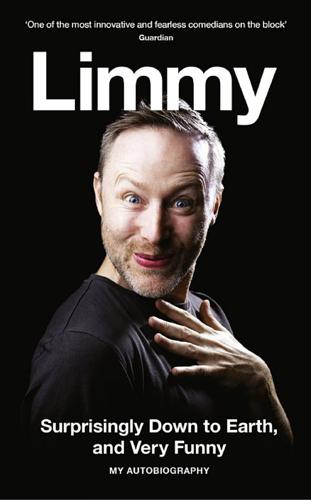
Surprisingly Down to Earth, and Very Funny: My Autobiography
by
Limmy
Published 21 Feb 2019
I’m talking about that trippy feeling. I’m talking about even just being on a radio interview and there are some other recognisable people around the table, like her from that cooking programme, or her that presents stuff, or him that wrote that film that you sometimes see being interviewed. It’s that imposter syndrome thing, but in a good way. It’s a feeling like I don’t belong there, but I’ve sneaked in and nobody knows it. It reminds me of the feeling I used to have when I was wee and I’d sneak out the house at night and hide in gardens and watch people go by, that same wee thrill of them not knowing I was there.
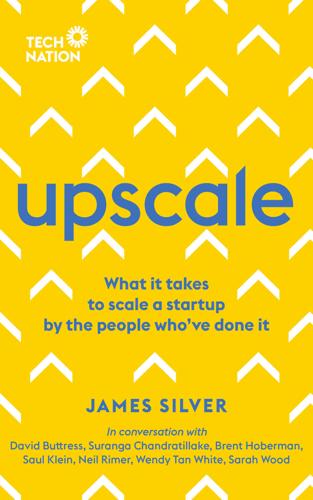
Upscale: What It Takes to Scale a Startup. By the People Who've Done It.
by
James Silver
Published 15 Nov 2018
Everything was a show and again, in the accelerator world [Matchchat was on the Ignite accelerator programme], it can feel a bit like you are on X Factor at times. It’s all about pleasing investors and raising money, and for many people that seems to be the goal in itself. ‘I got very good at suppressing any negative emotion, whether that was a feeling of isolation or of imposter syndrome, or anxiety around our financial position or where the business was, and I just suppressed all of that. I just never showed any vulnerability at all really. I was very much caught up in the world of “We’re smashing it! We’re killing it! We’re growing really fast!” - and needless to say the business stuttered to a halt and we ended up shutting it down.’

Crushing It!: How Great Entrepreneurs Build Their Business and Influence—and How You Can, Too
by
Gary Vaynerchuk
Published 30 Jan 2018
It might sound as though Dumas has more confidence than the average human. Yet despite his conviction that podcasting every day—learning by doing—would be the best way to create a quality product, and despite many of his early guests’ relatively low profiles and the public’s almost immediate positive response, Dumas found himself almost paralyzed by imposter syndrome. Who was he to reach out to anyone for a one-on-one conversation? But he soldiered on and worked through his doubts and fears. I started my entrepreneurial journey with one strength, and that was discipline, and I can tie that directly back to the army. But discipline alone is not going to get you anywhere.
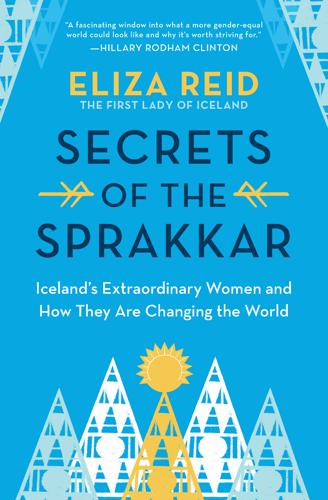
Secrets of the Sprakkar
by
Eliza Reid
Published 15 Jul 2021
That she earns her own living as an entrepreneur and writer while serving in the volunteer capacity of First Lady? Or that she sometimes wears secondhand clothing to public events? I hope it all adds up to something. As much as I espouse the importance of role models, I still suffer from a degree of imposter syndrome when it comes to being referred to as one myself. Early in 2020, I was invited to attend a seminar at the University of Iceland on gender imbalance in management positions in the country. I didn’t have a specific role to play at the session; the organizer asked me because she knew of my interest in the topic.

Don't Trust, Don't Fear, Don't Beg: The Extraordinary Story of the Arctic 30
by
Ben Stewart
Published 4 May 2015
AUTHOR’S NOTE In September 2013 I took a phone call from Mads Christensen, at the end of which he asked me to lead the international media team pushing for the release of the Arctic 30. ‘We need to make them famous,’ he said. Then he hung up. I lowered the phone and wondered if I’d actually agreed to take the job. I didn’t say I wouldn’t do it, so I guessed that meant I was doing it. Suffering as I do from acute imposter syndrome, I thought momentarily about calling him back and politely declining the offer, but I knew half the people in jail and some of them were good friends. I’d climbed power station chimneys with them and broken into polluting factories at their side. I’d sailed to Greenland with Iain Rogers, Colin Russell and Mannes Ubels.
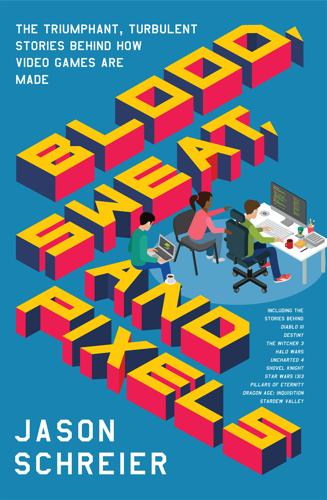
Blood, Sweat, and Pixels: The Triumphant, Turbulent Stories Behind How Video Games Are Made
by
Jason Schreier
Published 4 Sep 2017
And the thrill of going to all these different places and talking about the game and having such a good reaction. But then the downside of being so emotionally and physically drained from the whole thing.” Like many game creators, Velasco found himself dealing with a heavy dose of postproject depression and imposter syndrome. “I [thought], ‘Oh, who even cares, we just ripped off Mega Man,’” he said. “We fooled people into liking this. I’m not even really good at this.” It would take a while before Velasco found his balance again, but at least now they were done. The crunch was over. Soon they’d be getting nice salaries—due to their flat structure, each of the cofounders would draw the same amount of money—and they’d be able to readjust their work-life balance.
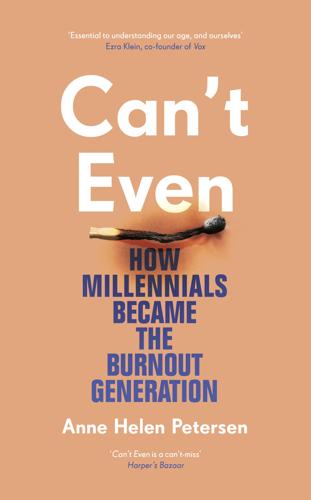
Can't Even: How Millennials Became the Burnout Generation
by
Anne Helen Petersen
Published 14 Jan 2021
“It was very difficult and degrading to have a conversation with a manager over a set of images I barely had any memory of,” she explained. “There was always this cloud of distrust that hung around our office. No one at my level felt like they were doing good work, or could do anything right,” Bri continued. “Morale plummeted, and I began having imposter syndrome, even though I’ve worked in my field for over seven years—my every move was being monitored, and the only feedback I ever received from management was negative.” At Microsoft, managers can access data on employees’ chats, emails, and calendar appointments to measure “employee productivity, management efficacy, and work-life balance.”

Please Don't Sit on My Bed in Your Outside Clothes: Essays
by
Phoebe Robinson
Published 14 Oct 2021
Of course, I’d like to thank my fellow nominees: Reset Passwords Because I Forgot the Old Ones, My Determination to Eat Cheese in Public Despite Being Lactose Intolerant, My Hairstyle That I Managed Not to Sweat Out After Bone Bones with Bae,* Meryl Streep (because when is she not nominated), and Imposter Syndrome. All your performances this year were impeccable. *cut to meme of Meryl Streep from 2015 Oscars clapping and pointing at stage from her seat* My 2020 wouldn’t have been what it was if it weren’t for everyone who attended the final dates of my “Sorry, Harriet Tubman” stand-up tour, especially those who confused me for literally any other Black woman who works in Hollywood.
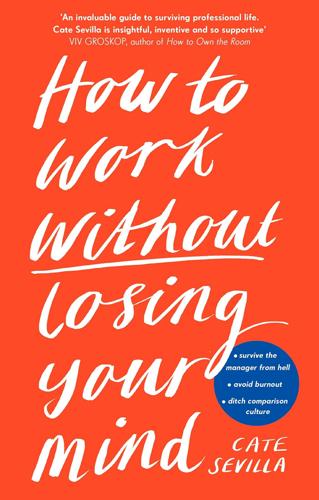
How to Work Without Losing Your Mind
by
Cate Sevilla
Published 14 Jan 2021
Acting overly entitled isn’t exactly inclusive behaviour Unless you are the actual Queen (in which case, thank you for buying the book, Ma’am), you don’t get to treat people as though your time is so much more valuable than theirs, or that they’re just lucky to be in the same room as you. And, even then, we know that the Queen specifically and purposefully does not treat people like that. Somewhere along the lines, whether it was through ~empowering~ Instagram quotes about hustling or everyone telling each other what a queen or girlboss they are, we, as a way of combating imposter syndrome or low confidence, have developed a habit of acting a bit … entitled. It’s the strong-badass-bitch-lady-boss tone I mentioned before. I know it, because I have definitely, 100 per cent done this before. I also know that it was born out of insecurity and an inferiority complex, and also mimicking how some of the people around me behaved.

On the Edge: The Art of Risking Everything
by
Nate Silver
Published 12 Aug 2024
Conversely, I’d been on TV plenty, both for poker and under the pressure cooker of presidential election nights on network news. If you get deep into the Main Event, which lasts for almost two weeks from start to finish, you’ll see opponents crack under the pressure. Maybe they’re tired from playing for days on end, happy enough to have made it that far. Maybe they have imposter syndrome, or even survivor’s guilt after all their friends have busted out of the tournament and gone home. Faced with a fight-or-flight response to stress, they flee. I empathize with those impulses, and had it been two years earlier, I might have felt them myself. Not this time, though. As I made my way back to the TV table following a break, a player named Shaun Deeb—a six-time WSOP bracelet winner—asked me what my objective was.
…
The baked-in quality Seiver is referring to is somewhere between competitiveness and confidence—but a better word for it might be courage. Different people manifest it in different ways. There’s Sullivan, with her quiet confidence that she could do the job of being an astronaut in a situation where many people would have developed imposter syndrome and felt like they didn’t belong. There’s Maria Ho, with her fuck-the-haters attitude, how she “really [doesn’t] care what other people think” about the societal expectations for women. It’s the men in the River who sometimes can have more fragile egos and need more external validation, like “Poker Brat” Phil Hellmuth.
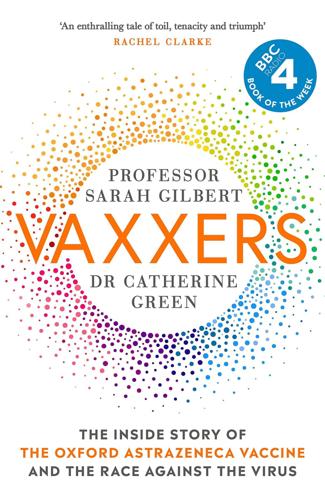
Vaxxers: The Inside Story of the Oxford AstraZeneca Vaccine and the Race Against the Virus
by
Sarah Gilbert
and
Catherine Green
Published 7 Jul 2021
I’m completely happy standing on stage and talking science to an audience of scientists, but this felt very different. I knew that James would ask broad questions, and I’m not a vaccinologist or a medical doctor, and I didn’t want to let anyone down by saying anything wrong or stupid or that could be taken the wrong way. I was having a bad case of imposter syndrome. In the end, it seemed to go pretty well. I think I cheered James up. Everything was feeling a bit gloomy at this point: we had been locked down for a month, the prime minister had still not returned to work having been in intensive care, PPE shortages were so bad that some doctors and nurses were being asked to work in bin bags, the UN had warned that Covid-19 could cause famines of ‘biblical proportions’, and the chief medical officer, Chris Whitty, had used the previous day’s government coronavirus briefing to say that it was ‘wholly unrealistic’ to expect life to return to normal soon.

Spaceman: An Astronaut's Unlikely Journey to Unlock the Secrets of the Universe
by
Mike Massimino
Published 3 Oct 2016
Going to space had been my dream for so long, sometimes I felt like it might still be a dream, like I was going to wake up and realize I was just an average Joe going to work back on Long Island in my tie and my white shirts. That was maybe the hardest thing for me: accepting that this was real. Physically I was in the best shape of my life. Getting my mind right was far more difficult. It’s called imposter syndrome, the fear that people are going to figure out that you don’t belong, that you don’t know what you’re doing. You’re afraid that one day somebody’s going to tap you on the shoulder and say, “Mike Massimino? Yeah, there’s been a mistake. We meant to pick the other guy.” It’s natural to have those thoughts, but too often I’d let them get in my way.
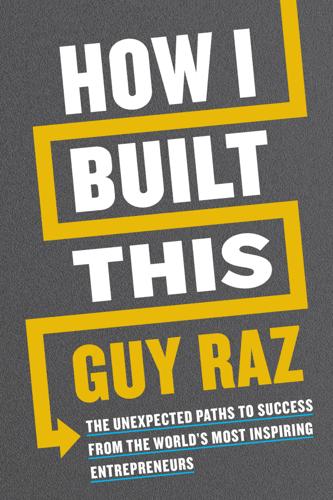
How I Built This: The Unexpected Paths to Success From the World's Most Inspiring Entrepreneurs
by
Guy Raz
Published 14 Sep 2020
What I love most is the journey of coming up with a big idea and turning it into something tangible—though it would take me until my late thirties to start to feel even a tinge of confidence about some of my ideas or my ability to execute them. For most of my career before then, I struggled with the kinds of worries I thought charismatic entrepreneurs never confronted: anxiety, fear, imposter syndrome, even depression. But over the course of my time doing deep-dive interviews with hundreds of business founders and CEOs for my shows, I’ve come to understand that, for the most part, they are just like you and me. Which is to say, they’re human. They all have sleepless nights and midnight terrors.
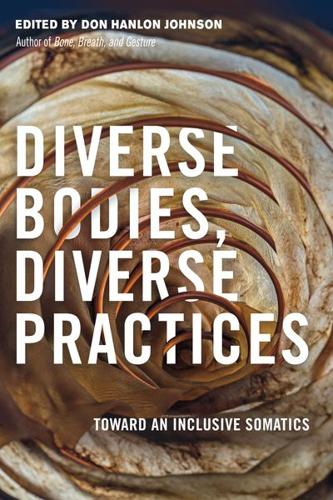
Diverse Bodies, Diverse Practices: Toward an Inclusive Somatics
by
Don Hanlon Johnson
Published 10 Sep 2018
I feel fragmented. I become a cluttering frenzy of thoughts and I become a series of arbitrary boneless and bloodless sounds. I cannot feel myself. I am not myself. Overwhelmed, I quake with self-doubt, anxiety, fear, worry. The marching industry of perfection finds itself in my neck and shoulders. Imposter syndrome creeps into my spine. I no longer feel the gentle and powerful flow of my intuition. My body is not enough. My wisdom is not enough. I shouldn’t be surprised at how quickly this occurs; after all my body has been shaped, trained, socialized, forced, and collapsed into the many somatic manifestations of the disbelief in my knowledge and capacity.

Super Thinking: The Big Book of Mental Models
by
Gabriel Weinberg
and
Lauren McCann
Published 17 Jun 2019
Department of, 97 homelessness, 22 homeostasis, 110–12, 194 honeypot, 234 hornet’s nest, 51–52 horse racing, 91, 286 hospital rankings, 50 hotels, 217, 228 house, see home Housing First, 22 Houston, Tex., 192 Hyman, Ray, 62 hydra effect, 51, 52 hyperbolic discounting, 87 hypothesis, 136, 161 alternative, 163, 164, 166, 167 null, 163, 164 see also experiments hysteresis, 194 IBM, 241 iCloud, 97 idea maze, 301 ignorance, veil of, 21 “I Know an Old Lady” (Bonne and Mills), 58 immigration, 15–16 immune system, 194 imposter syndrome, 268–72 incentives, 55 perverse, 50–51, 54 income, U.S. household, 148–49, 191 independence, 205 India, 50–51, 235 individualist versus collectivist, in organizational culture, 274 inertia, 102–3, 105–8, 110, 112, 113, 119, 120, 129, 290, 296 infantry, in organizations and projects, 253 inflation, 179–80, 182–83 inflection point, 115 Influence: The Psychology of Persuasion (Cialdini), 215 influence models, 215, 220, 221, 226, 229, 230, 289 authority, 219–20, 226 commitment, 216, 220 liking, 216–17, 220 reciprocity, 215–16, 220, 222, 229, 289 scarcity, 219, 220 social proof, 217–20, 229 information asymmetry, 45–47 information overload, 60, 146 Ingham, Harrington, 196 in-group favoritism, 127, 217 Inkster, James A., 91 innovations, 302 disruptive, 308, 310–11 innovators, in technology adoption life cycle, 116–17, 289, 311 Innovator’s Dilemma, The (Christensen), 310 insincerity, manipulative, 264 Instagram, 220, 247, 291, 310 instant gratification, 87 institutional knowledge, 257 insurance, 43, 46, 191 health, 42, 46, 47, 190 key person, 305 Intel, 308, 310 intelligence quotient (IQ), 138, 250–52 interest, compound, 69, 85 interest rates, 85, 182–83 internalizing, 41–42 internet, 290 messaging services, 119 introverts, 249–50 intuition, 30–31, 33, 132 invention, simultaneous, 291–92 inverse fallacy, 156–57 inverse thinking, 1–2, 291 investments, investors, 180–84, 192, 272, 288 cargo cult, 316 Invisible Armies (Boot), 239 iPad, 290 iPod, 296–97 IQ (intelligence quotient), 138, 250–52 Iraq, 196, 234, 243, 276 irreversible decisions, 61–62, 223–24 Iverson, Allen, 246 Jacobi, Carl, 1 James, LeBron, 246 Janz, Christoph, 298–99 Japan, 241 jelly beans, 169–71 Jobs, Steve, 64, 296–97 jobs to be done, 296, 299–300 John, Tommy, 83 Johnson, Magic, 246 jokes, 35–36 Jordan, Michael, 246 Journal of Experimental Psychology, 13, 17 Joy, Bill, 247 Joy’s law, 247, 248 judicial rulings, 63, 144 Jurassic Park, 121 justice, distributive versus procedural, 224–25 Justice, U.S.
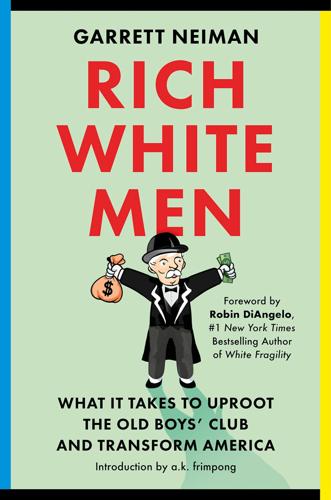
Rich White Men: What It Takes to Uproot the Old Boys' Club and Transform America
by
Garrett Neiman
Published 19 Jun 2023
My anxiety is melting away. I’ve learned things about my ancestors that my parents never planned to tell me, which would have been lost forever. I stand up for myself and what I believe more, but I also cause less harm. In short, I’m starting to feel free. As a rich white man, I’ve only felt an enduring sense of imposter syndrome during my work to advance social justice. It was humbling, while I was putting the finishing touches on this manuscript, to receive feedback from a more seasoned white male activist that perhaps I didn’t have the necessary experience to write this book. It was also humbling to receive feedback around the same time from Indigenous activists that Indigenous wisdom was underrepresented in this book.
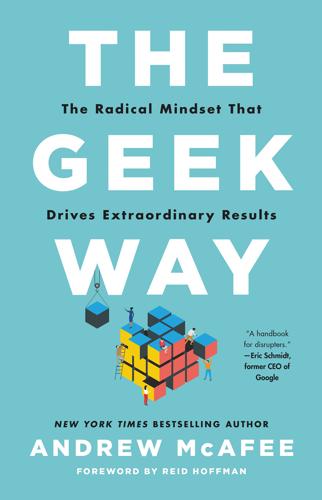
The Geek Way: The Radical Mindset That Drives Extraordinary Results
by
Andrew McAfee
Published 14 Nov 2023
So at some point I just thought, “I gotta be who I am.” And I don’t care how far I go in my career, but I’m just going to be who I am. I’m going to talk about the things that I failed at. I’m going to talk about how difficult it is as a woman to rise up in tech and how difficult it is to manage all of this. I’m going to talk about imposter syndrome, which I still have. I was just tired of following the “do more work and don’t show weakness” playbook. I’m not afraid to do more work, but I wanted to find places where I could be myself. Rangan found such a place at HubSpot. Under her leadership, the company has continued to work on its culture of openness.

Careless People: A Cautionary Tale of Power, Greed, and Lost Idealism
by
Sarah Wynn-Williams
Published 11 Mar 2025
She can drop into a soft girlish voice, like you’re sharing an intimate secret with her, and yet still command a room. Sheryl’s amazing. Lean In is based on eleven principles that basically boil down to: if a woman works hard enough, she can thrive at home and at work. These include: Sit at the table: Sheryl admits to feeling “imposter syndrome” but encourages women to “fake it till you make it.” She says that women keep themselves from advancing because they don’t have the self-confidence and drive that men do. “We lower our own expectations of what we can achieve.” Don’t leave before you leave: This is Sheryl’s belief that many women tend to “quietly lean back” way before they have children, worrying how they’ll manage family and work commitments.

Sunfall
by
Jim Al-Khalili
Published 17 Apr 2019
The truth was that she wasn’t cut out for this world of politics and public relations. In fact, rather than feeling flattered by all the attention, she’d felt a growing insecurity – a nagging anxiety that her shortcomings and the many gaps in her knowledge would, sooner or later, be exposed. She kept telling herself this was classic imposter syndrome. She was easily as highly qualified and knowledgeable as anyone else in her field, and she’d worked hard to get to the position she was in. Still, returning home briefly had meant she could hide away for a couple of days and hope that everyone forgot about her as the world moved on to another story.
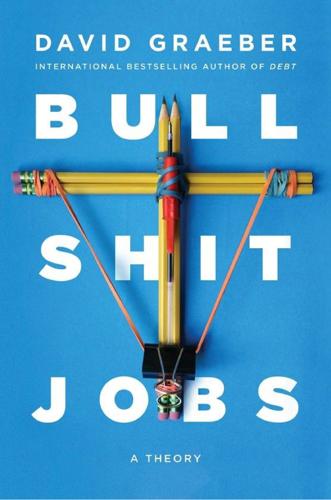
Bullshit Jobs: A Theory
by
David Graeber
Published 14 May 2018
Nouri, whom we met in chapter 2, repairing code for an incompetent Viennese psychologist, kept something of a diary of each of his successive bullshit jobs and their effects upon his mind and body: Nouri: Job 1: Programmer, (pointless) start-up. Effect on me: I first learned self-loathing. Got a cold every month. Imposter syndrome killed my immune system. Job 2: Programmer, (vanity project) start-up. Effect on me: I pushed myself so hard that I damaged my eye, forcing me to relax. Job 3: Software Developer, (scam) small business. Effect on me: usual depression, unable to find energy. Job 4: Software developer, (doomed, dysfunctional) ex-start-up.
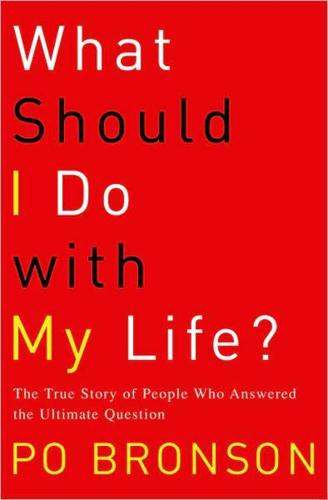
What Should I Do With My Life?
by
Po Bronson
Published 2 Jan 2001
Julia Meriwether is the chemical engineer who left engineering because her brain lacked the right chemical. “I always loved engineering,” she said. “You’ve met my friends. I was one of them.” She’s also learned, from a seminar at UT, that feeling like an unqualified imposter at work is common. So common that it has a name: Imposter syndrome. It’s particularly common among women thrust into lots of responsibility in a male-dominated work culture, where the men make it taboo to ask questions because they don’t want to appear uninformed or unintelligent. In other words, Julia learned that feeling like an imposter wasn’t a sign that she didn’t belong there.
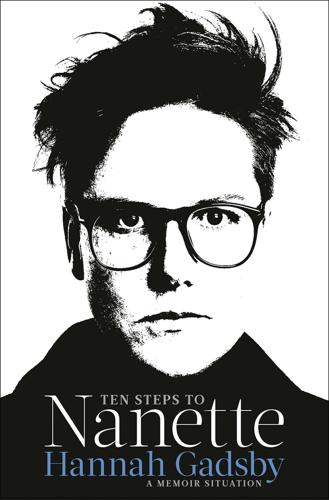
Ten Steps to Nanette: A Memoir Situation
by
Hannah Gadsby
Published 15 Mar 2022
In the first ten or so years that I had a show at the Melbourne Comedy Festival, I ended up being part of the Best Show conversation in some capacity. And in the years that I was short-listed, the week between being nominated and, as was the case for me, not winning the award always felt like a completely unnecessary gauntlet of scrutiny, false hope, professional jealousy and imposter syndrome, none of which I would have signed up for, but that is the stuff buzz is built out of. I knew my work was equal to that of any of the award winners of my world, but I also knew that Anne Edmonds was, and is, the funniest and most exciting stand-up comic working in Australia and she never wins anything.
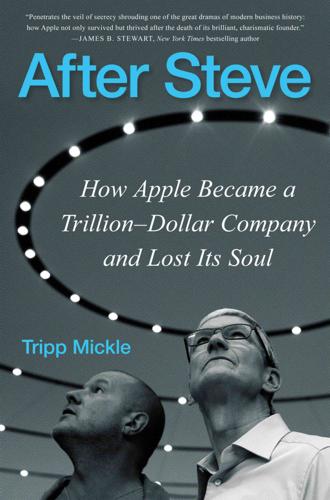
After Steve: How Apple Became a Trillion-Dollar Company and Lost Its Soul
by
Tripp Mickle
Published 2 May 2022
The iron cemented Ive’s place in the eyes of professors and peers as the class star, but he thought much of his work was dreadful. “I was frustrated because conceptually, I couldn’t do something that I wanted to do,” he recalled years later. That feeling of inadequacy would hound him for much of his career, leaving him restless with imposter syndrome. IN 1987, Ive fulfilled his promise to Roberts Weaver and spent a portion of the year interning with the firm in Notting Hill. The neighborhood had not yet made its Hollywood star turn in a Hugh Grant and Julia Roberts film, but it was becoming a hub for designers with Pentagram, another firm, a few blocks away.

API Design Patterns
by
Jj Geewax
Published 19 Jul 2021
I’d also like to thank Stu Feldman, Ari Balogh, Rich Sanzi, Joerg Heilig, Eyal Manor, Yury Izrailevsky, Walt Drummond, Caesar Sengupta, and Patrick Teo for their support and guidance while exploring these topics at Google. A special thanks to Dave Nagle for being a champion for all my work in ads, the cloud, APIs, and beyond and for encouraging me to push myself beyond my comfort zone. And thanks to Mark Chadwick who, over 10 years ago, helped me get past my imposter syndrome in API design. His constructive feedback and kind words are a big part of why I decided to dive deeper into this interesting area of computer science. Additionally, a special thank you is owed to Mark Hammond, who first taught me to question everything, even when it’s uncomfortable. This project would not have been possible without the editorial team at Manning, in particular Mike Stephens and Marjan Bace who okay’d the initial idea for this book, and Christina Taylor who stuck with me for another long-term project.

Facebook: The Inside Story
by
Steven Levy
Published 25 Feb 2020
Ever since Thefacebook had exploded at Harvard, and each step of the way in its journey, he had been opportunistic and ambitious. But he also felt the doubts that anyone in his early twenties might feel when suddenly tossed into the deep waters of high finance and monumental decision-making. Would things really work out? Who was he to do this? “I definitely had this imposter syndrome,” he says. “I’d surrounded myself with people who I respected as executives and I felt like they understood some things about building a company. They basically convinced me that I needed to entertain the offer.” Zuckerberg actually did crumble at one point and tentatively agreed to take the money.

Seeking SRE: Conversations About Running Production Systems at Scale
by
David N. Blank-Edelman
Published 16 Sep 2018
Contributor Bio Gene Kim is a multiple award-winning CTO, researcher, and coauthor of The Phoenix Project, The DevOps Handbook, and Accelerate (IT Revolution). He is the organizer of the DevOps Enterprise Summit conferences. 1 Bland described that at Google, one of the consequences of having so many talented developers was that it created “imposter syndrome,” a term coined by psychologists to informally describe people who are unable to internalize their accomplishments. Wikipedia states that “despite external evidence of their competence, those exhibiting the syndrome remain convinced that they are frauds and do not deserve the success they have achieved.